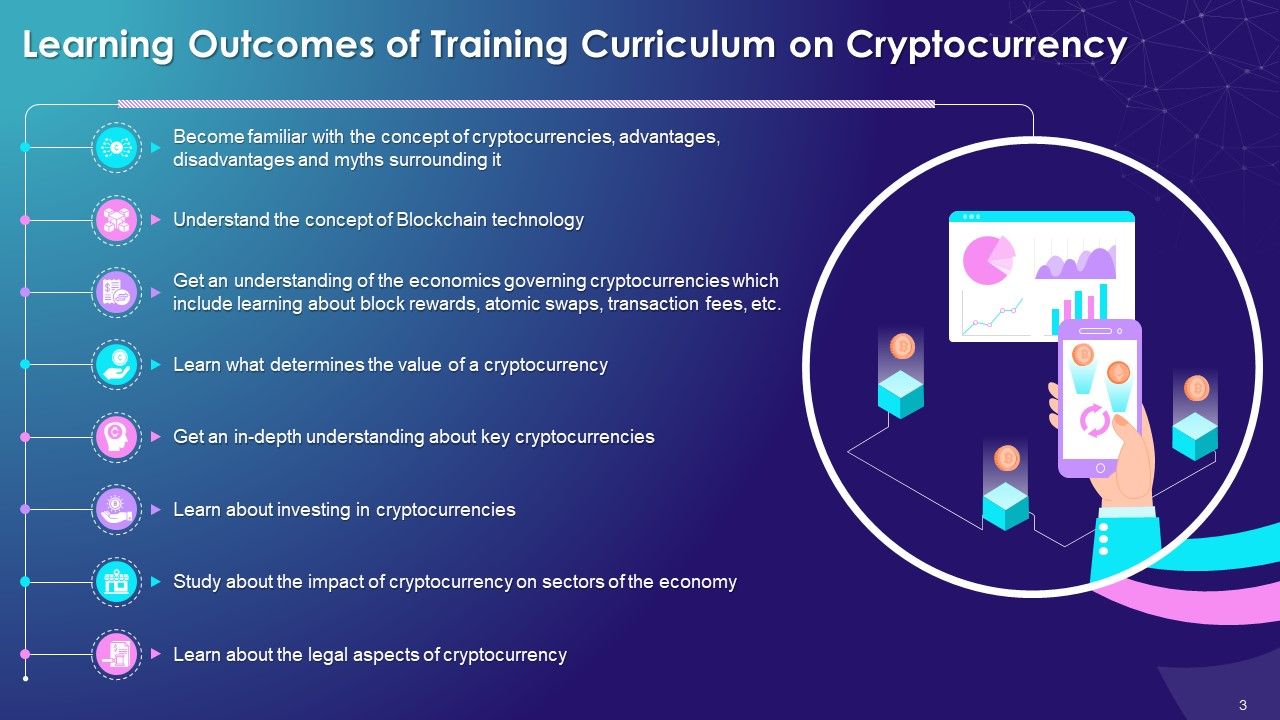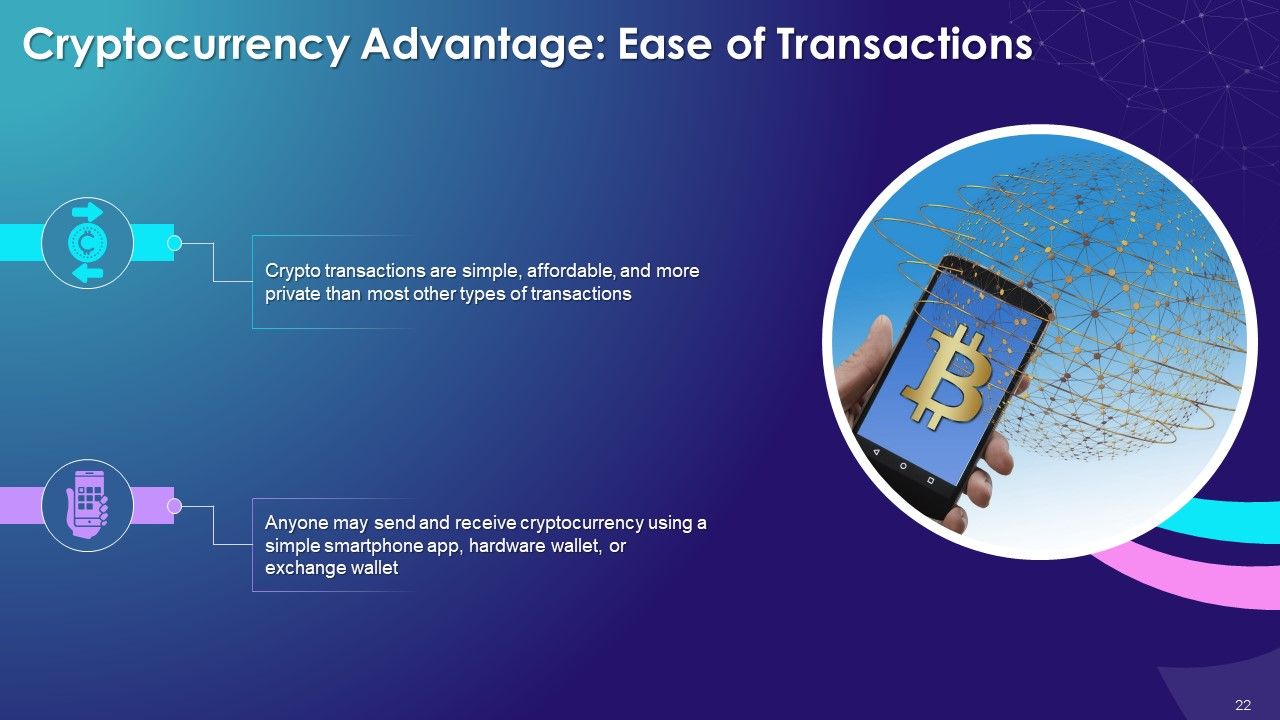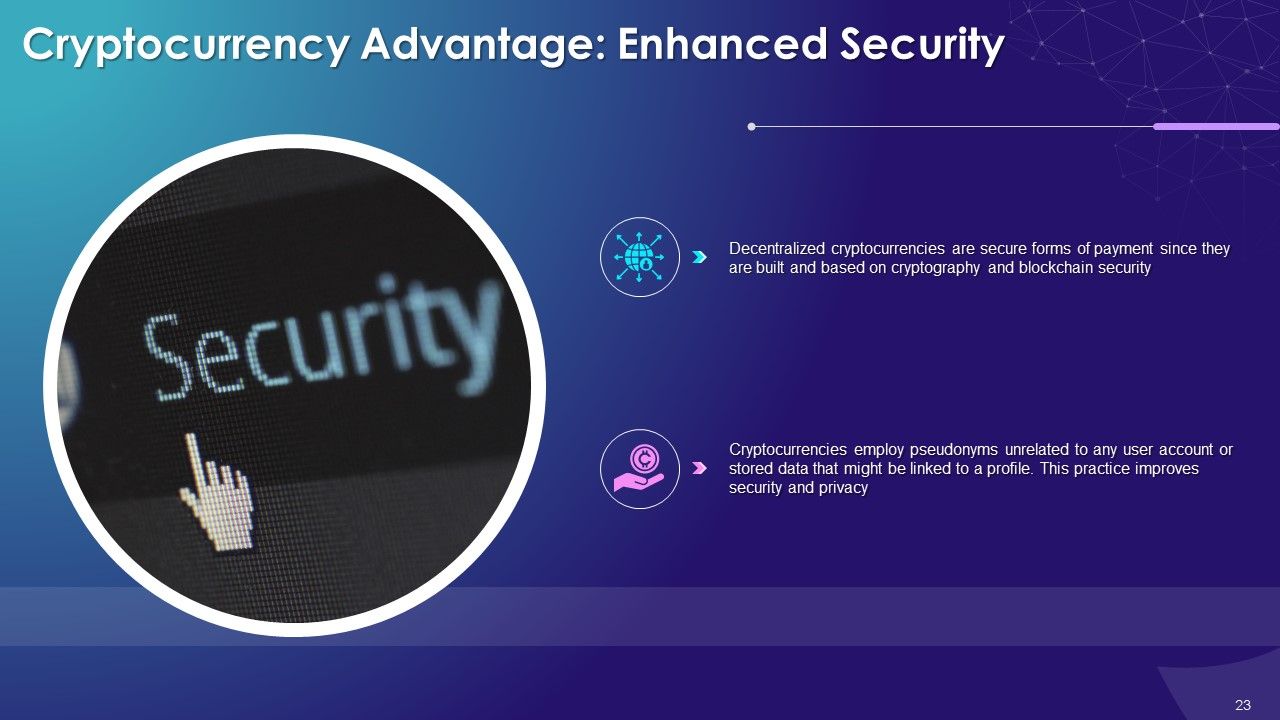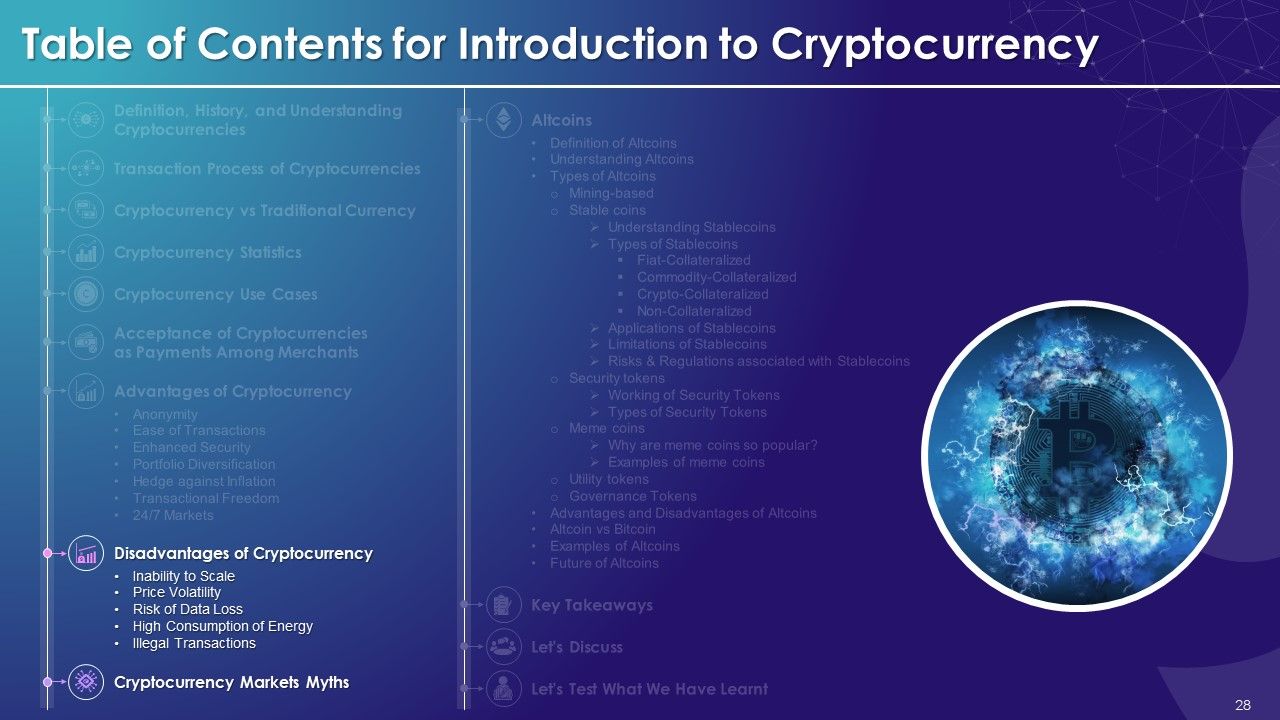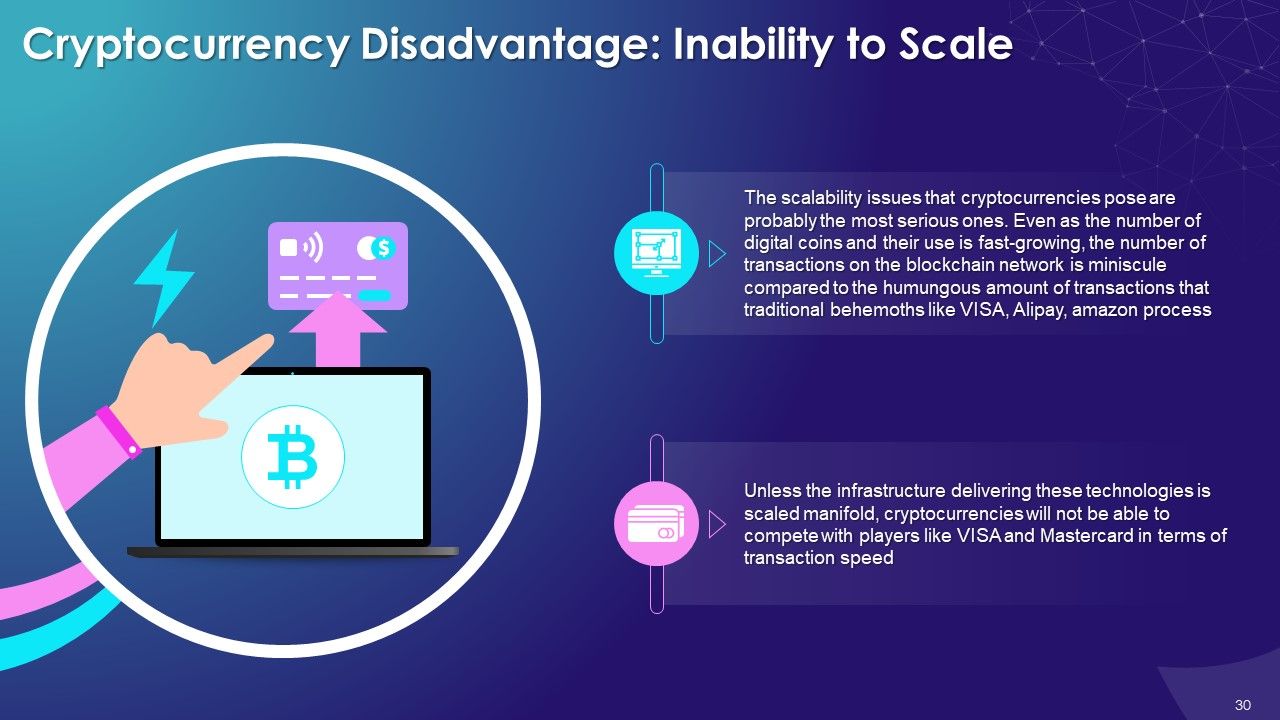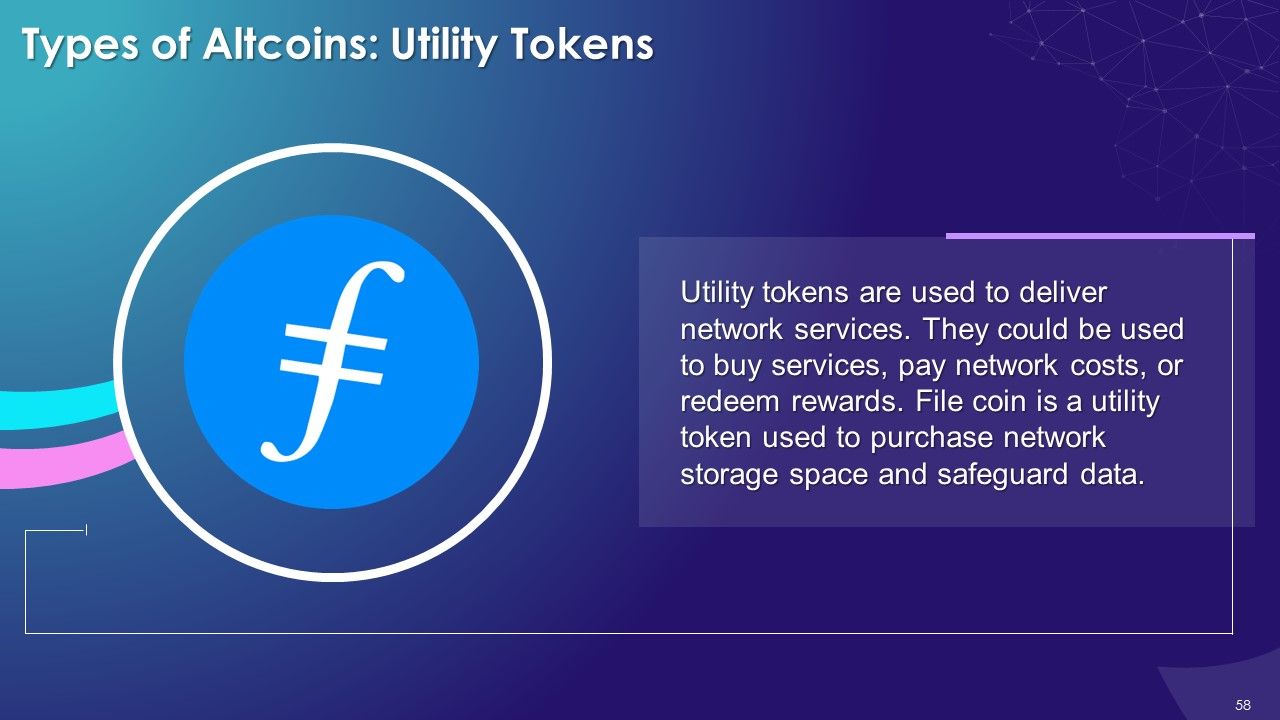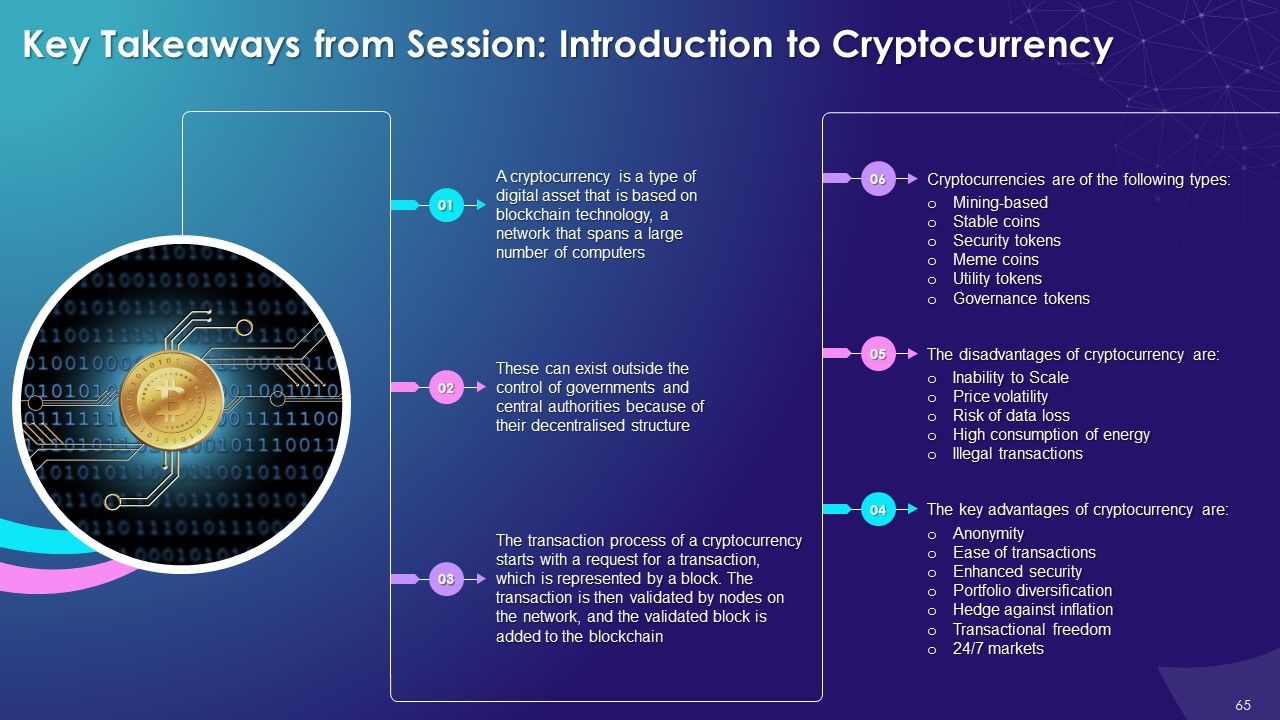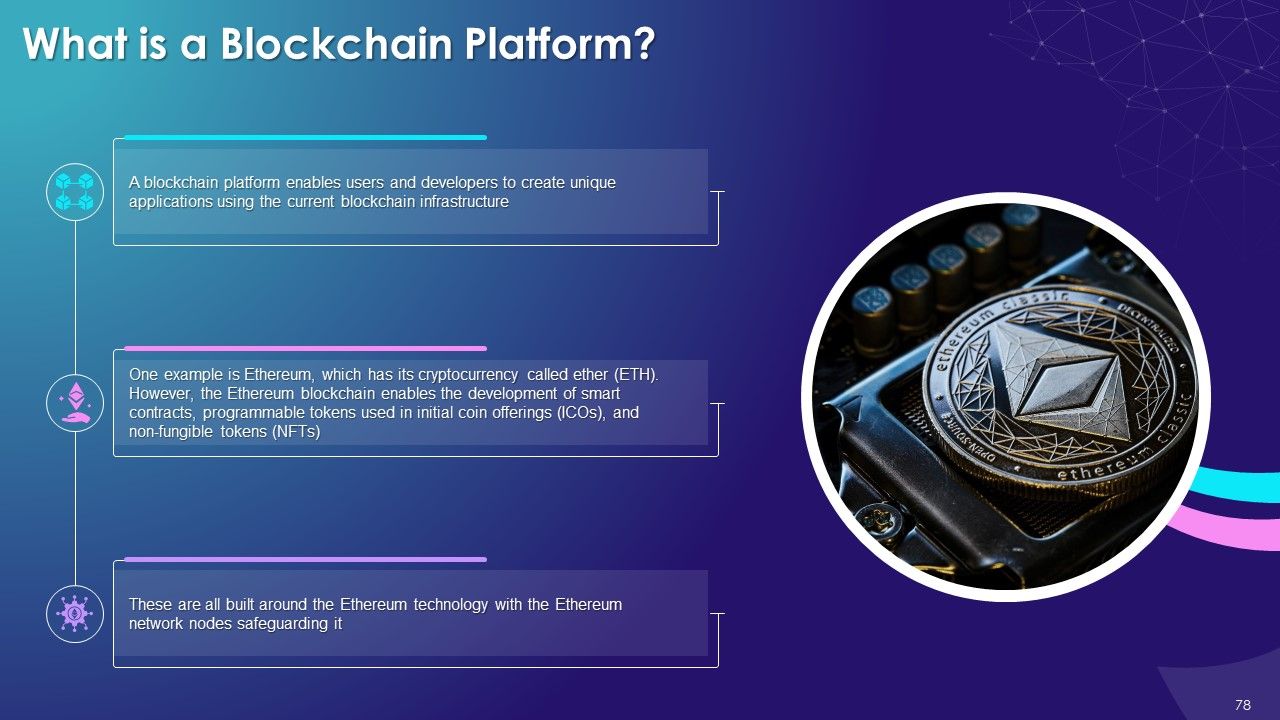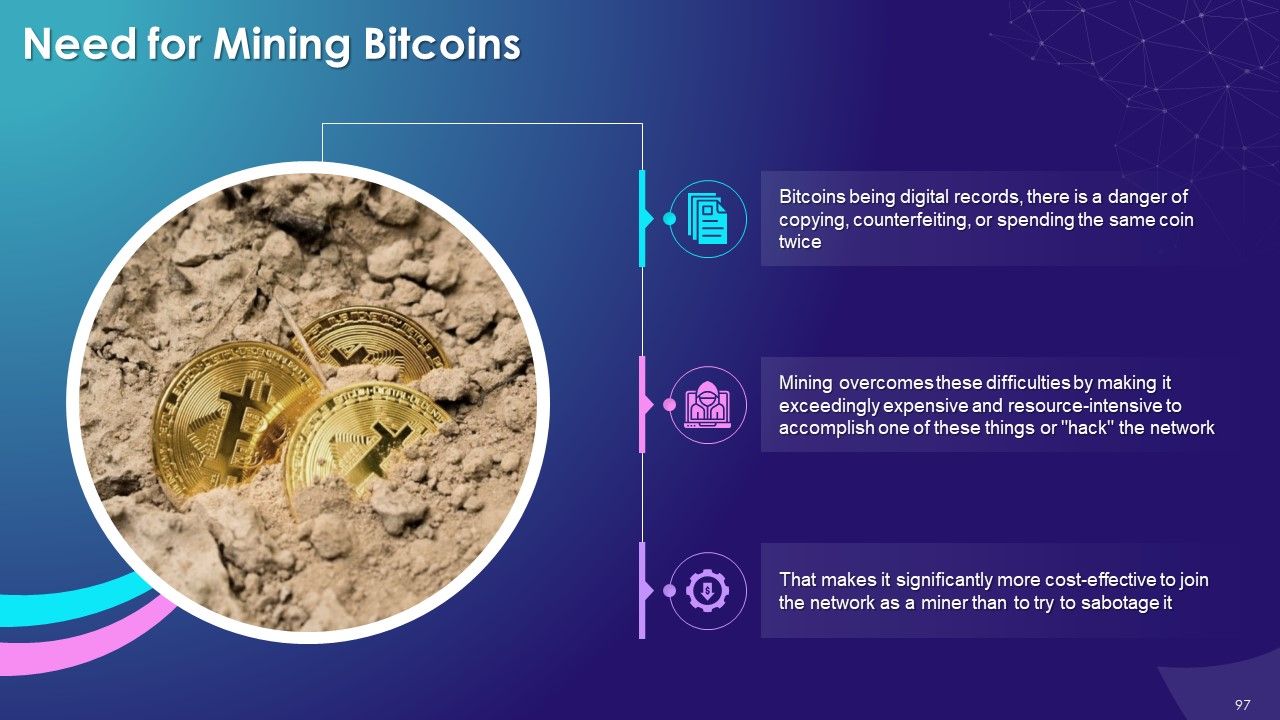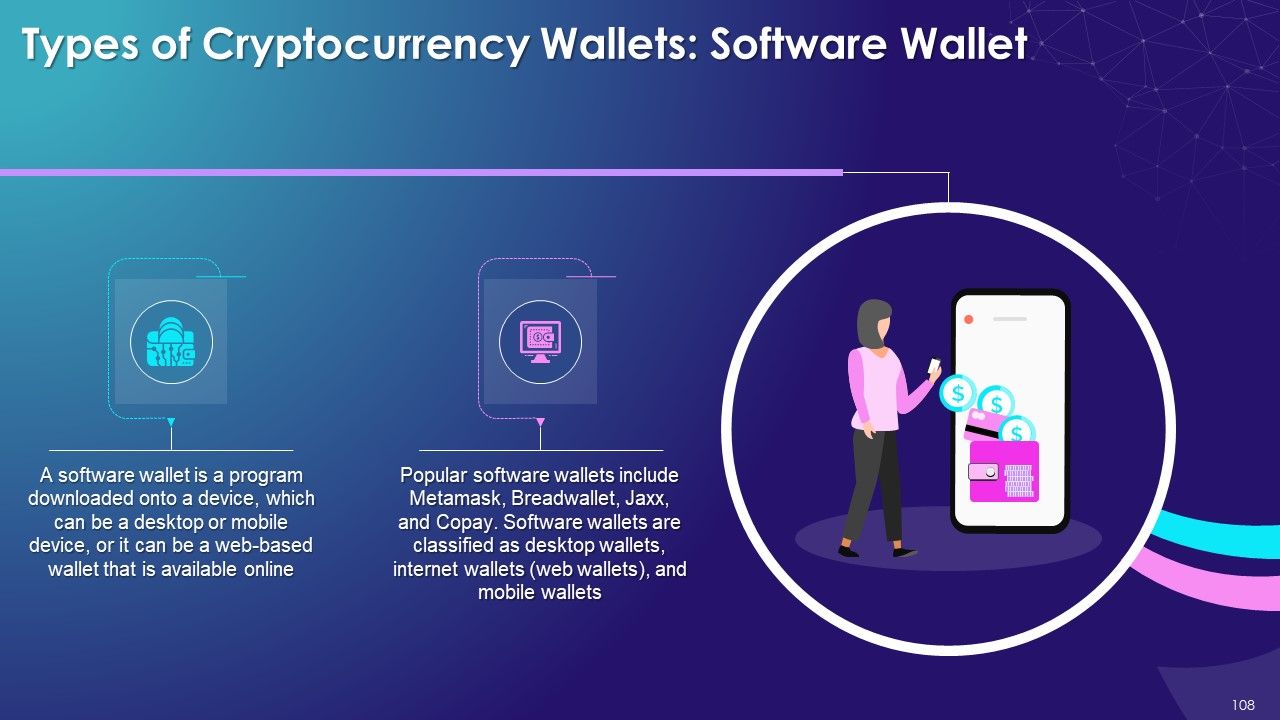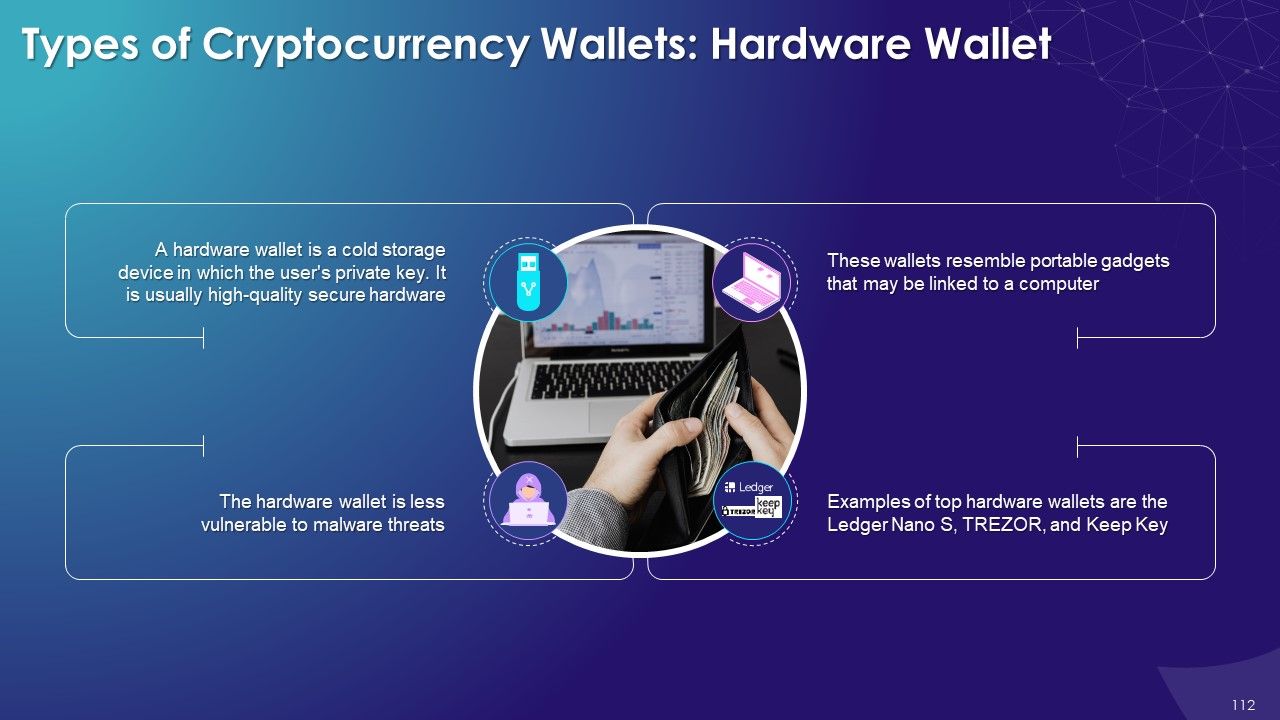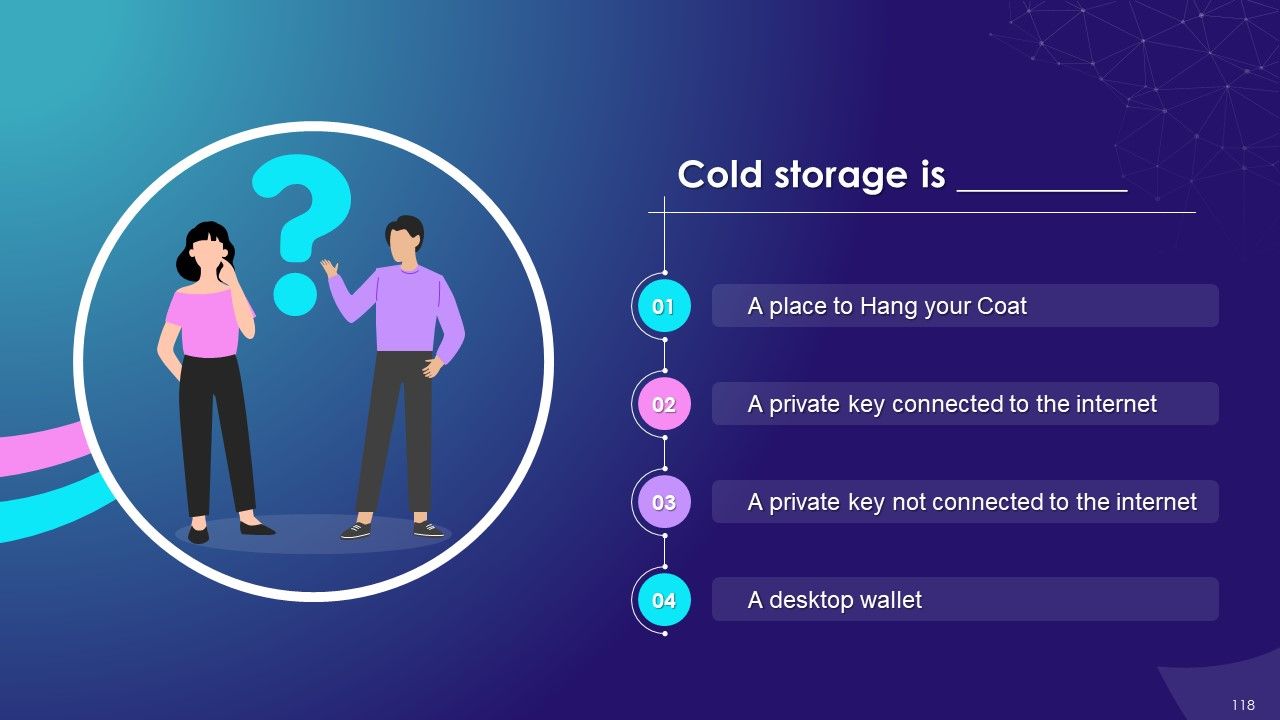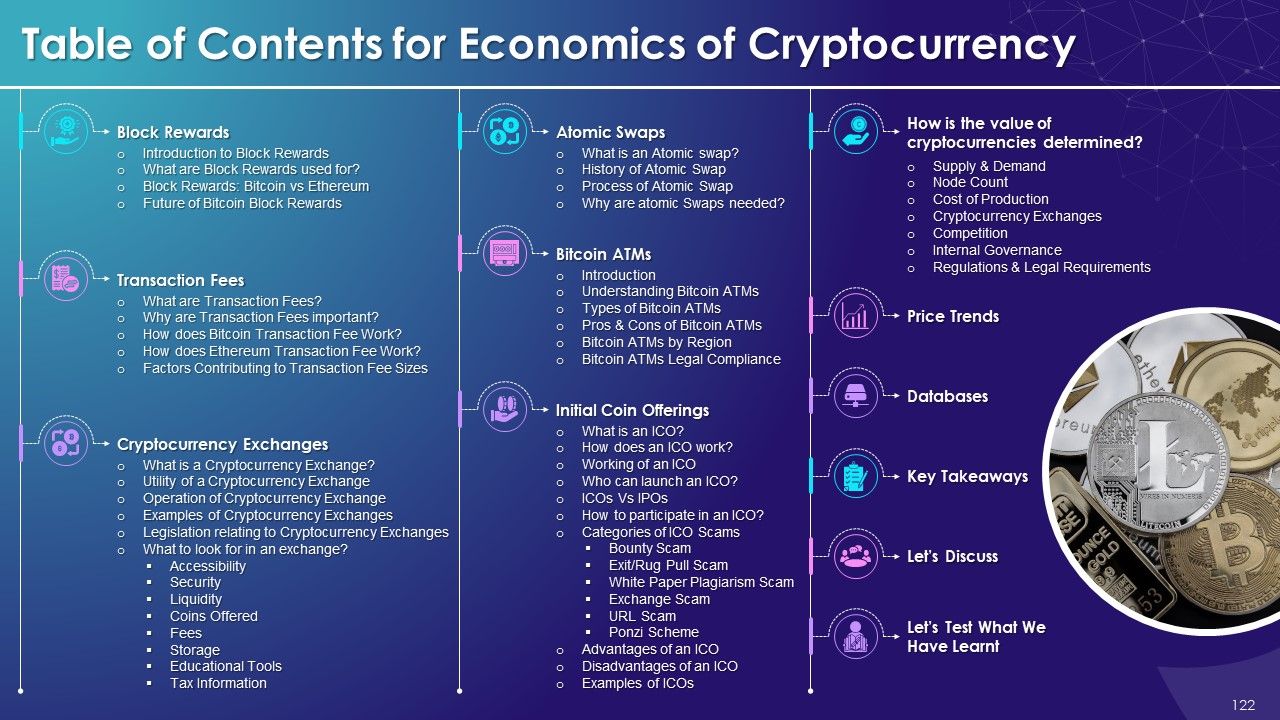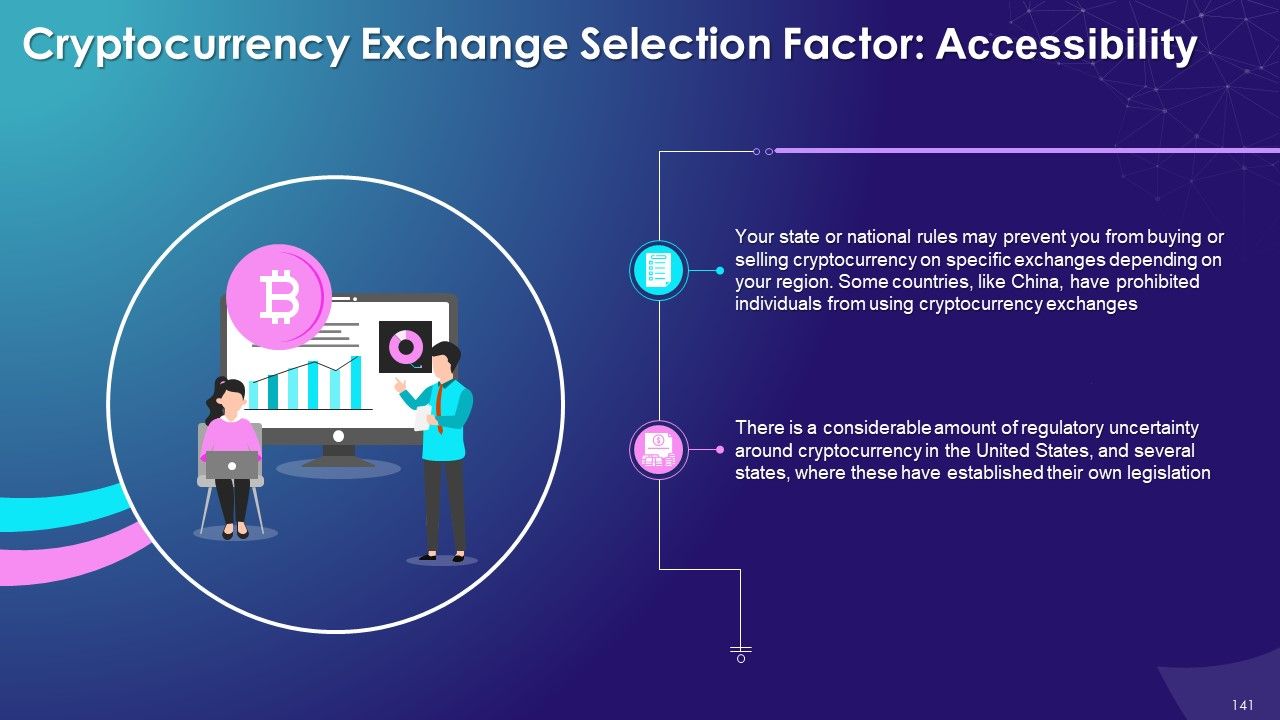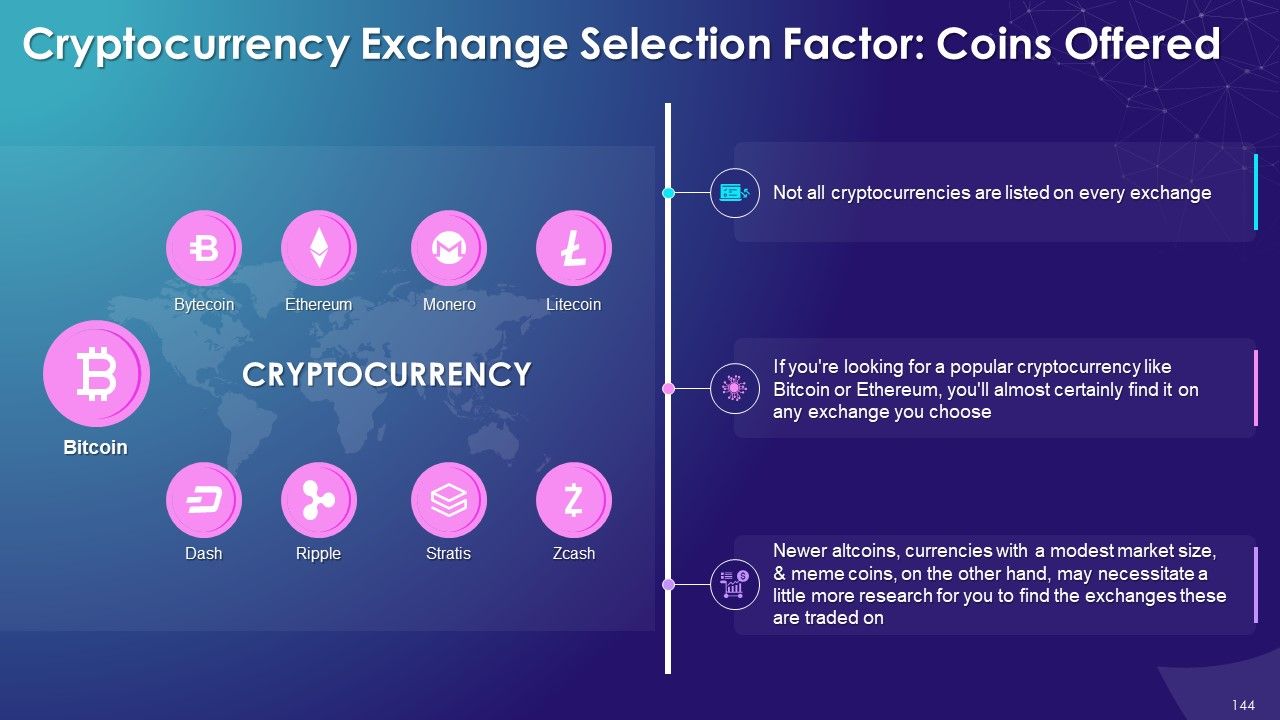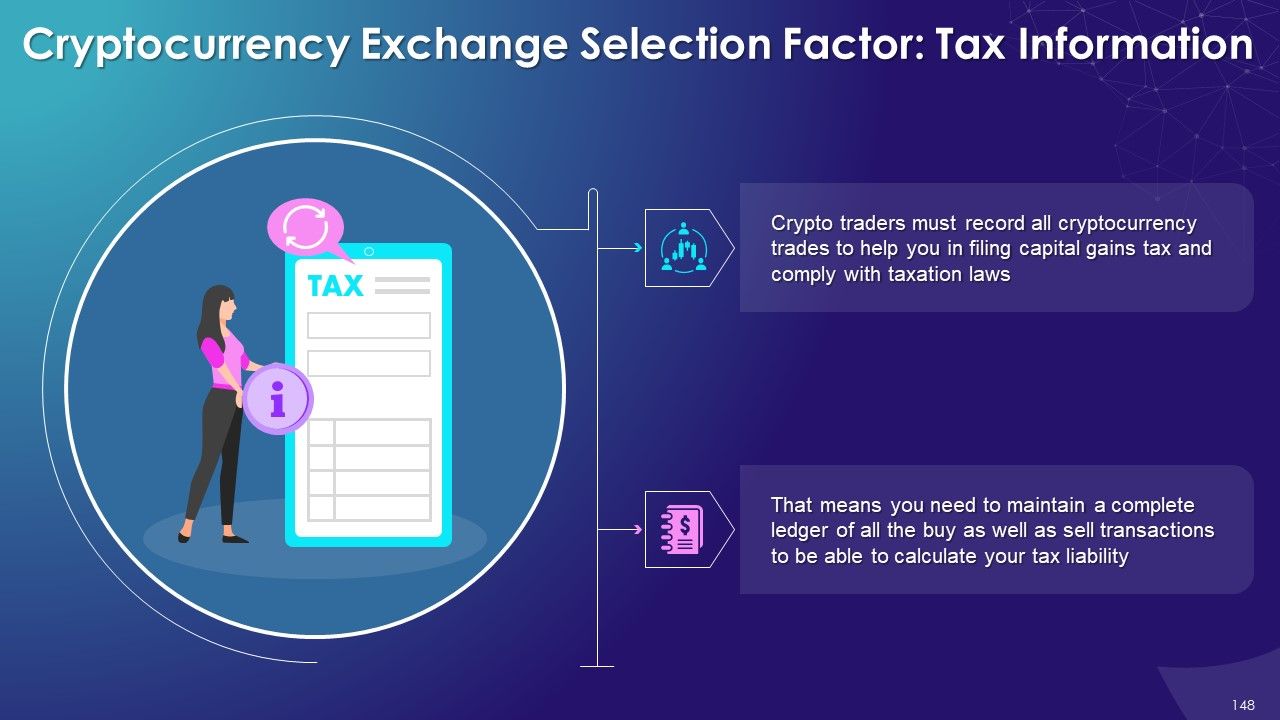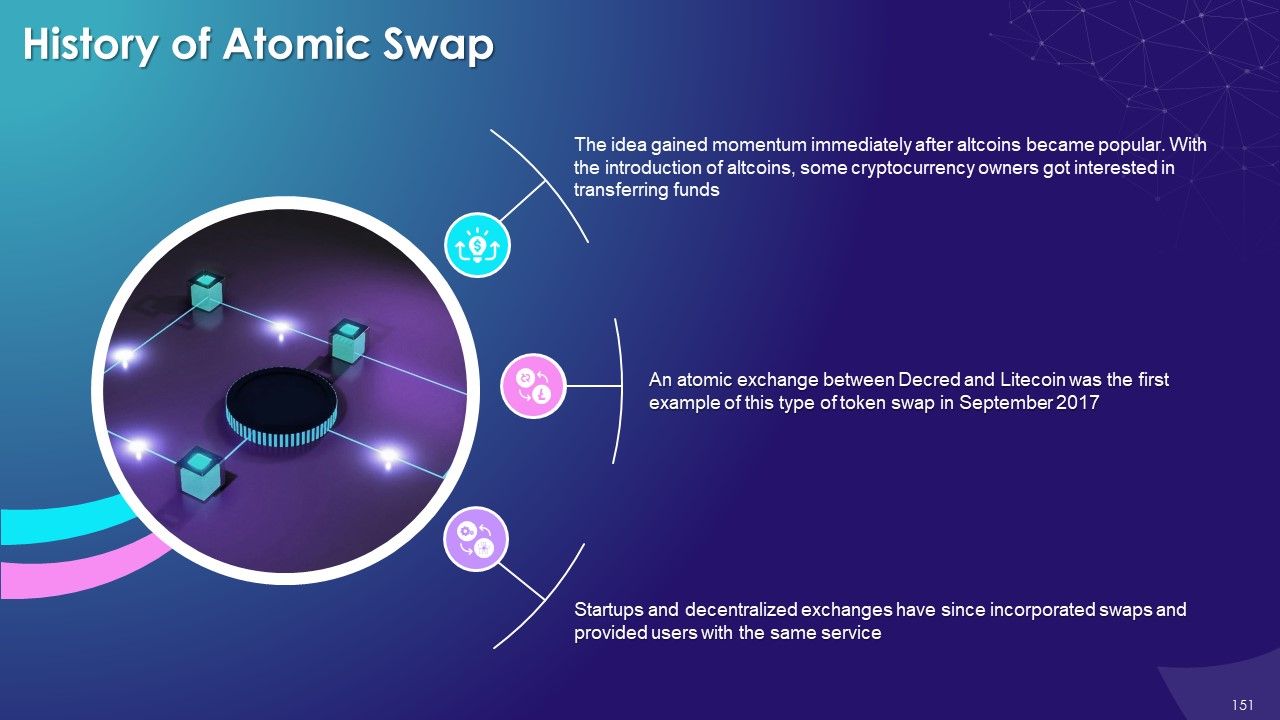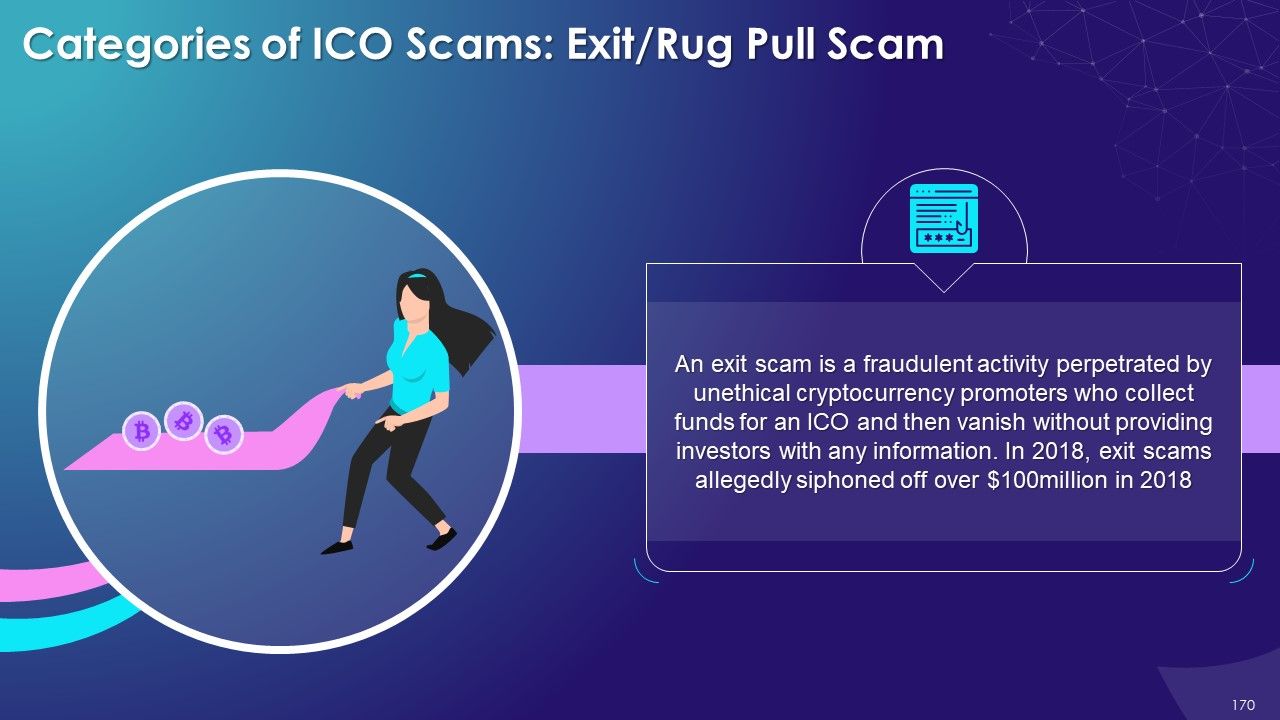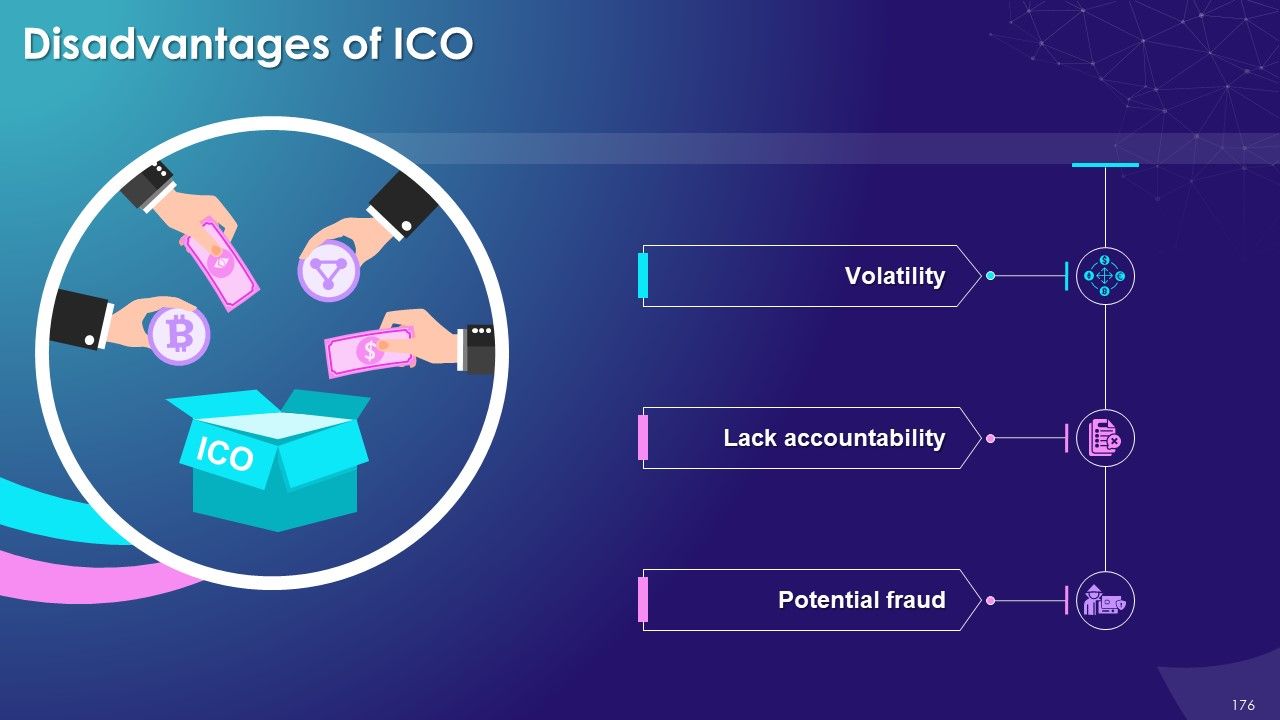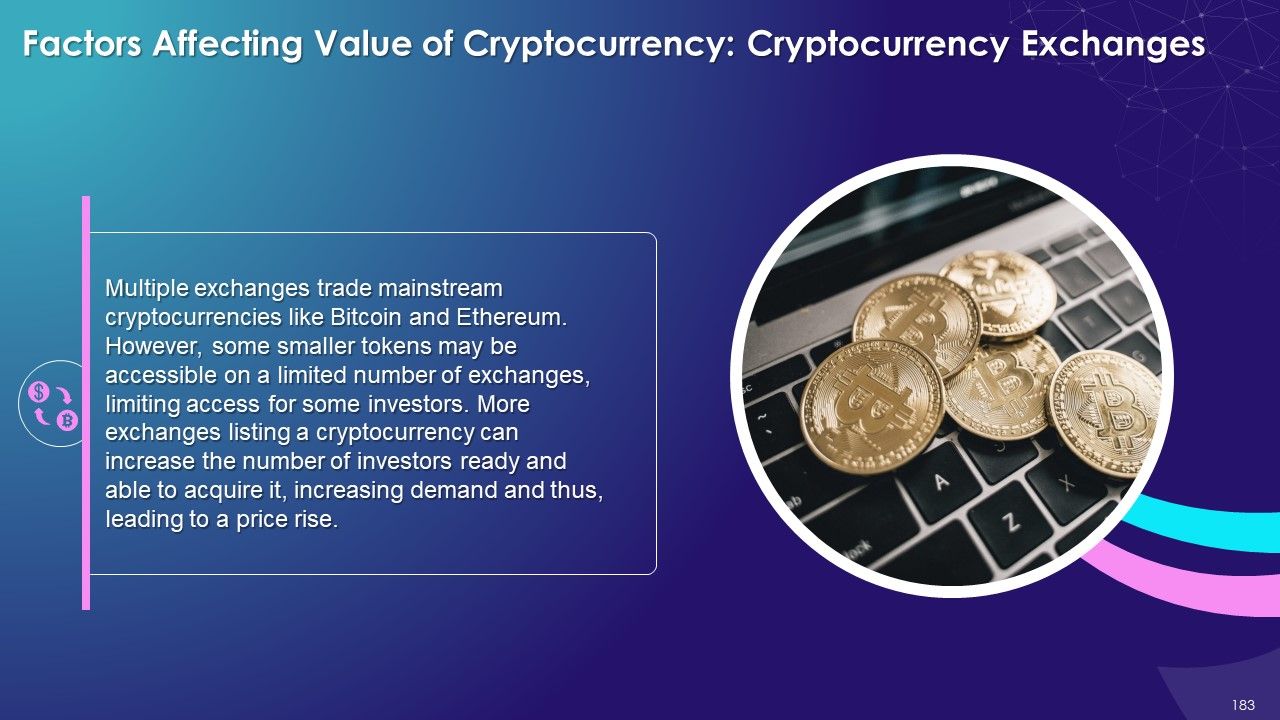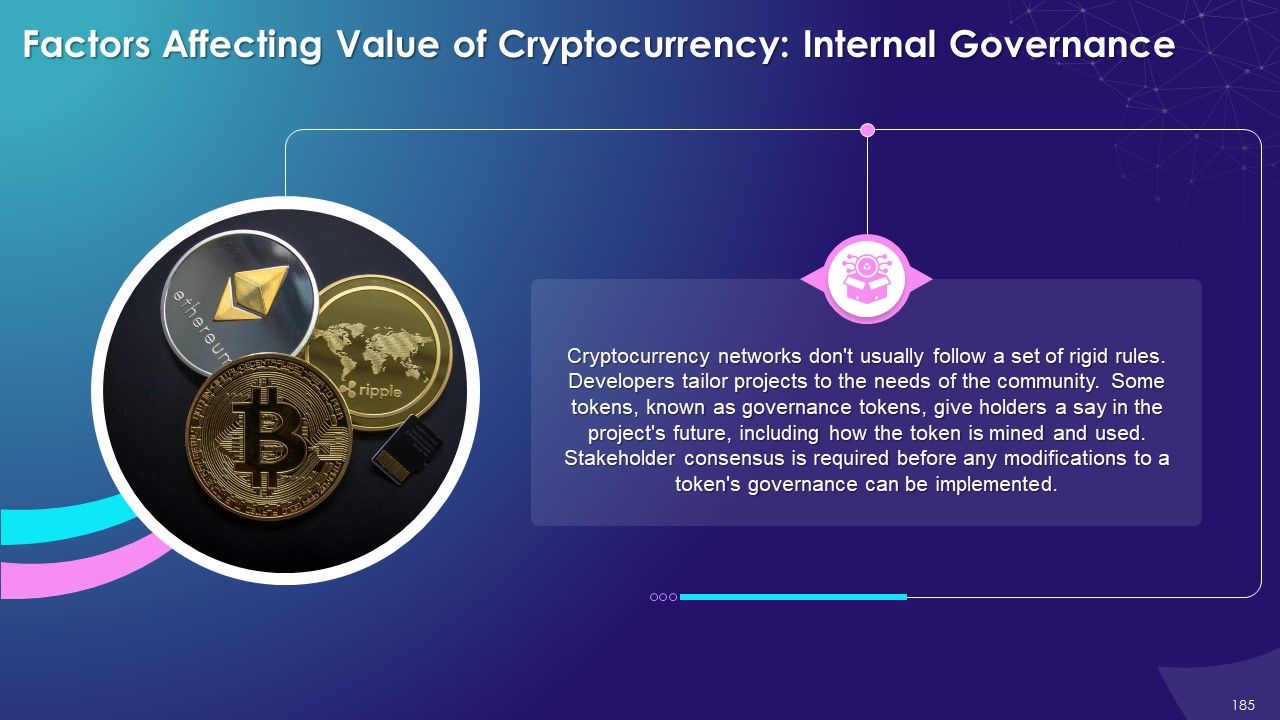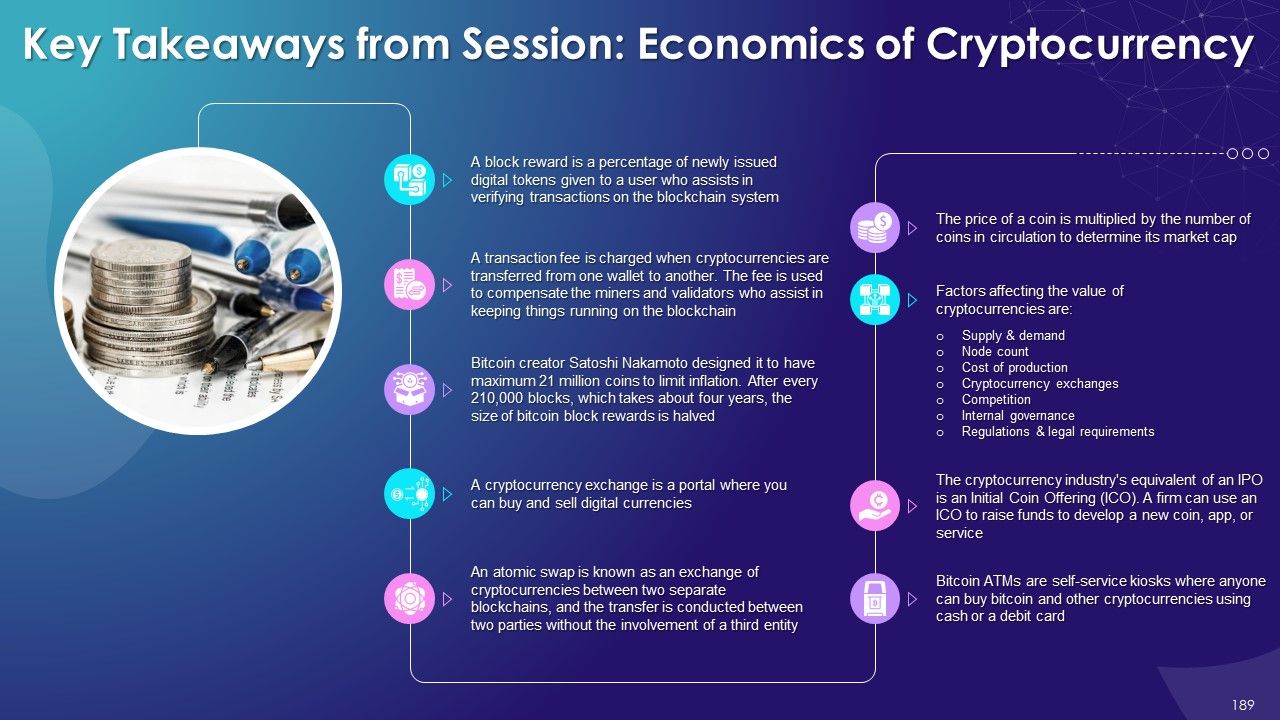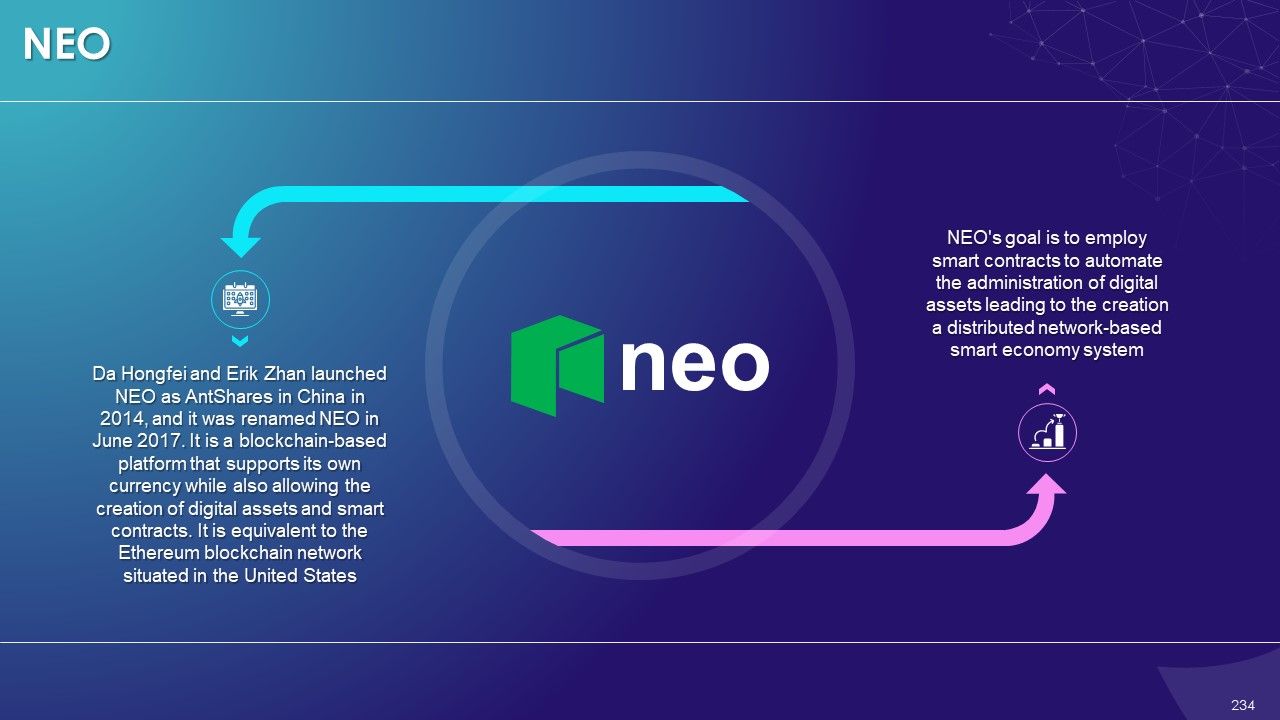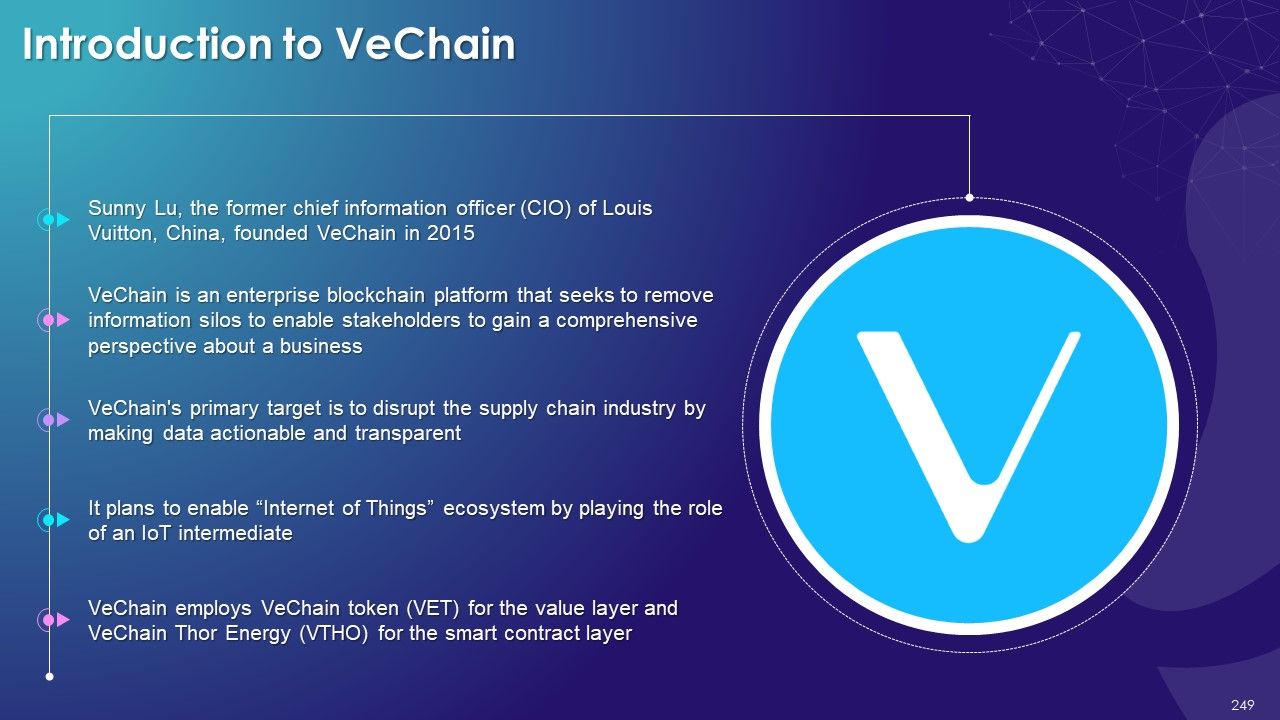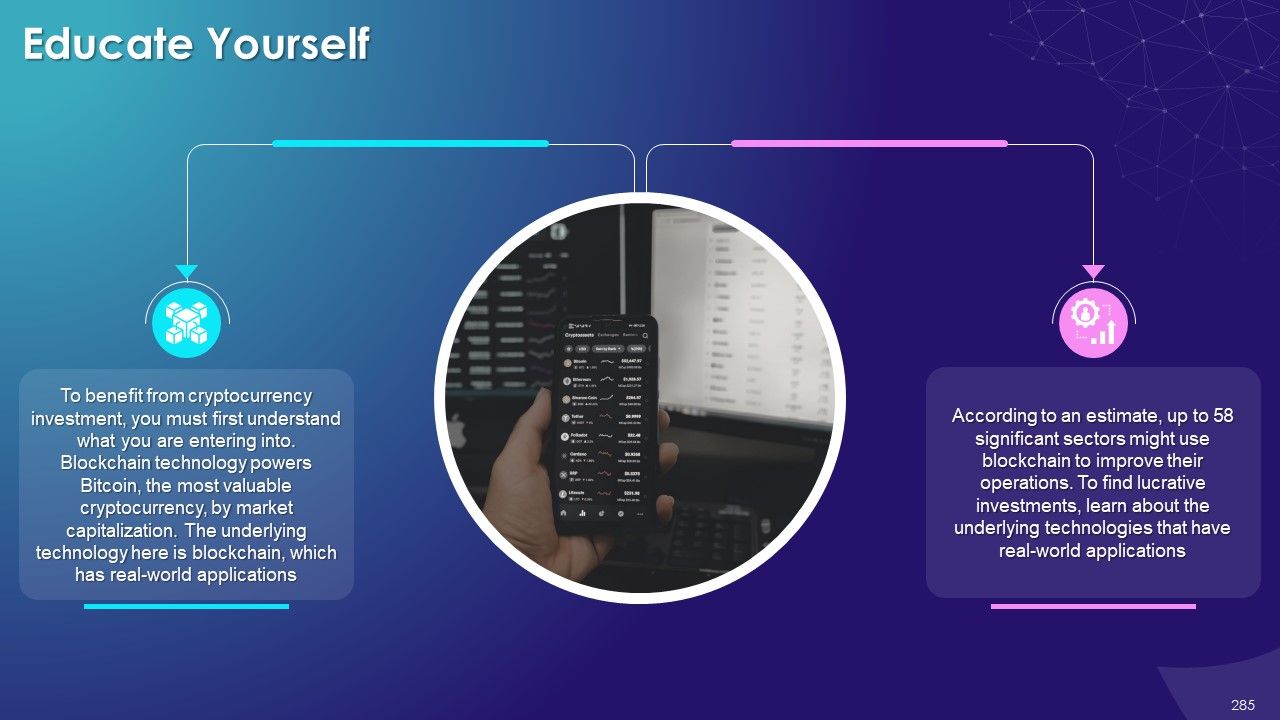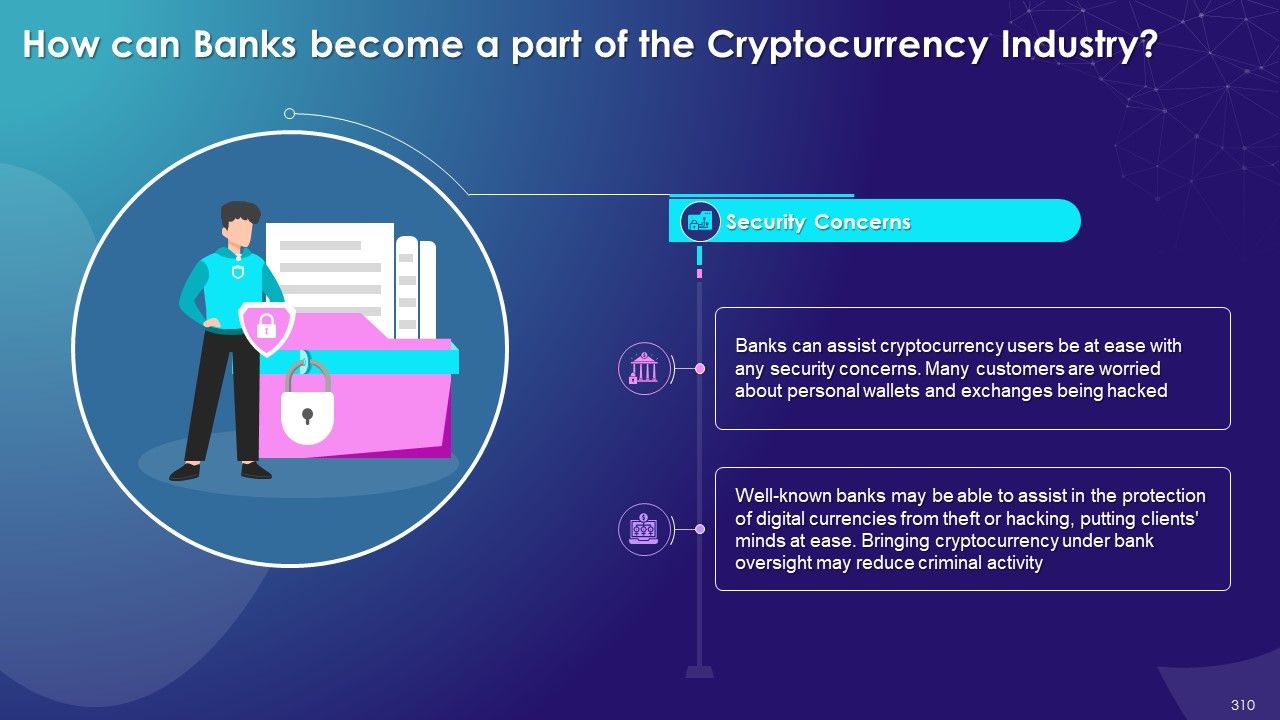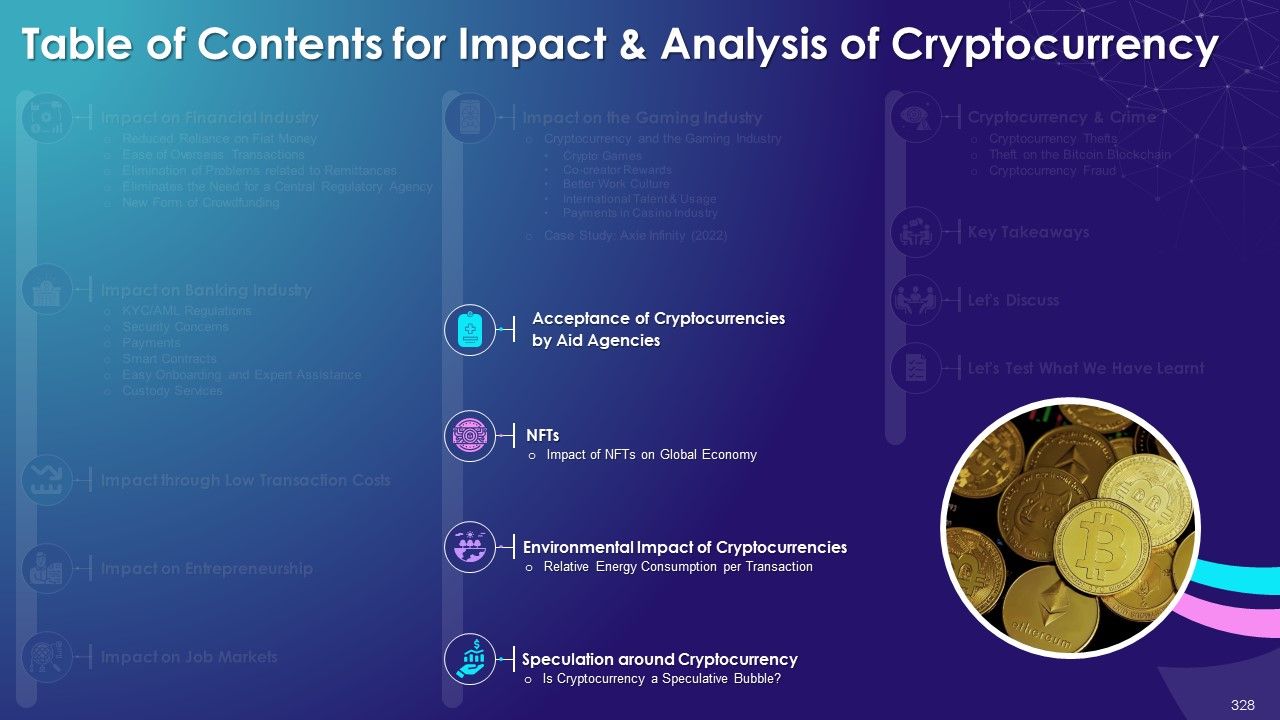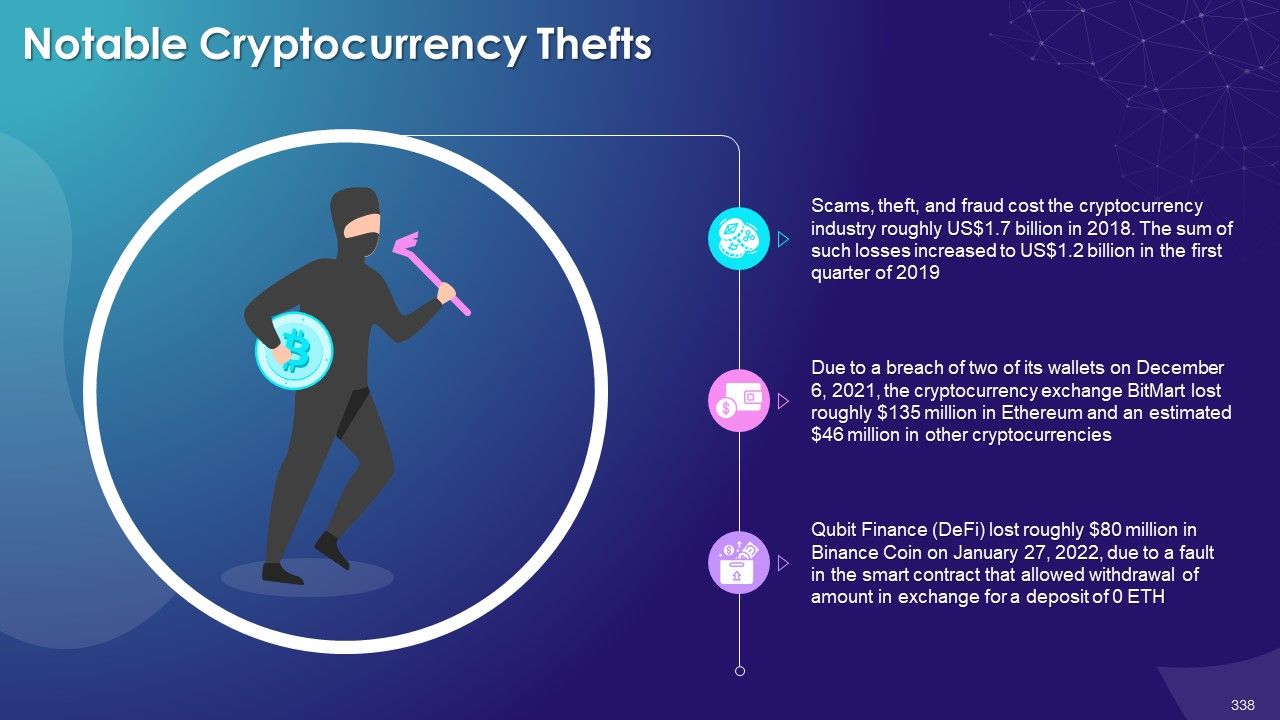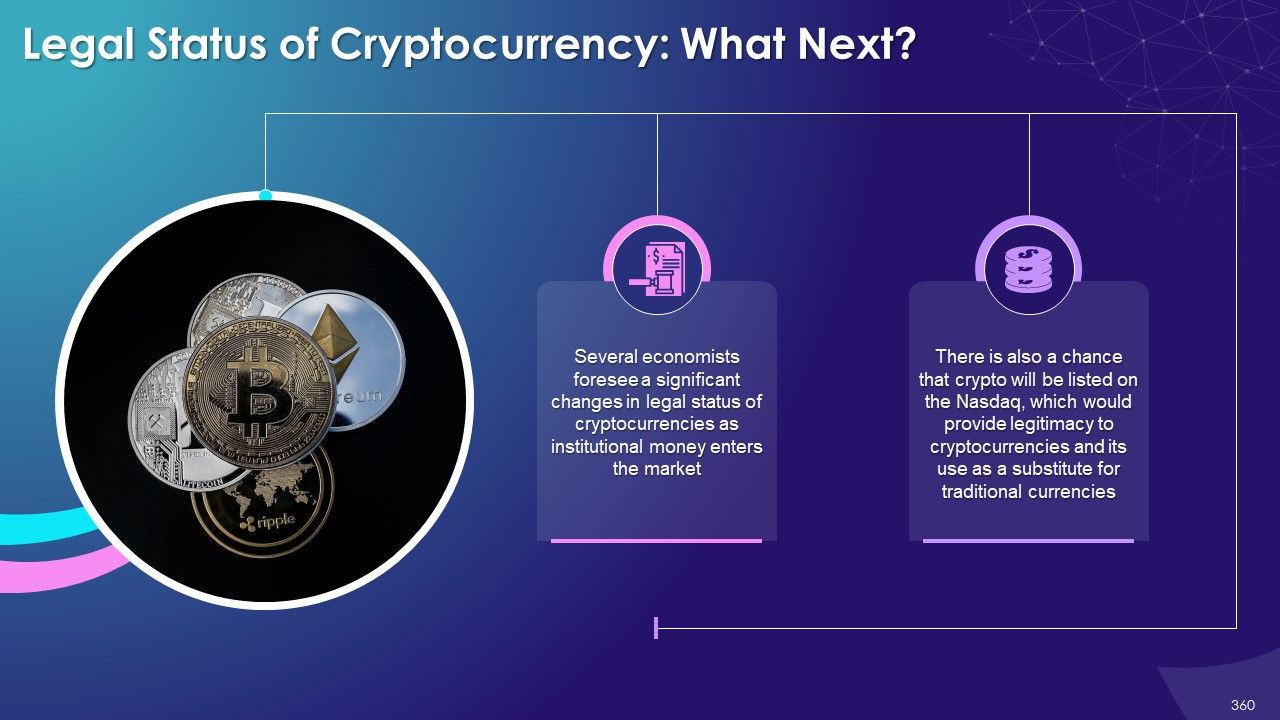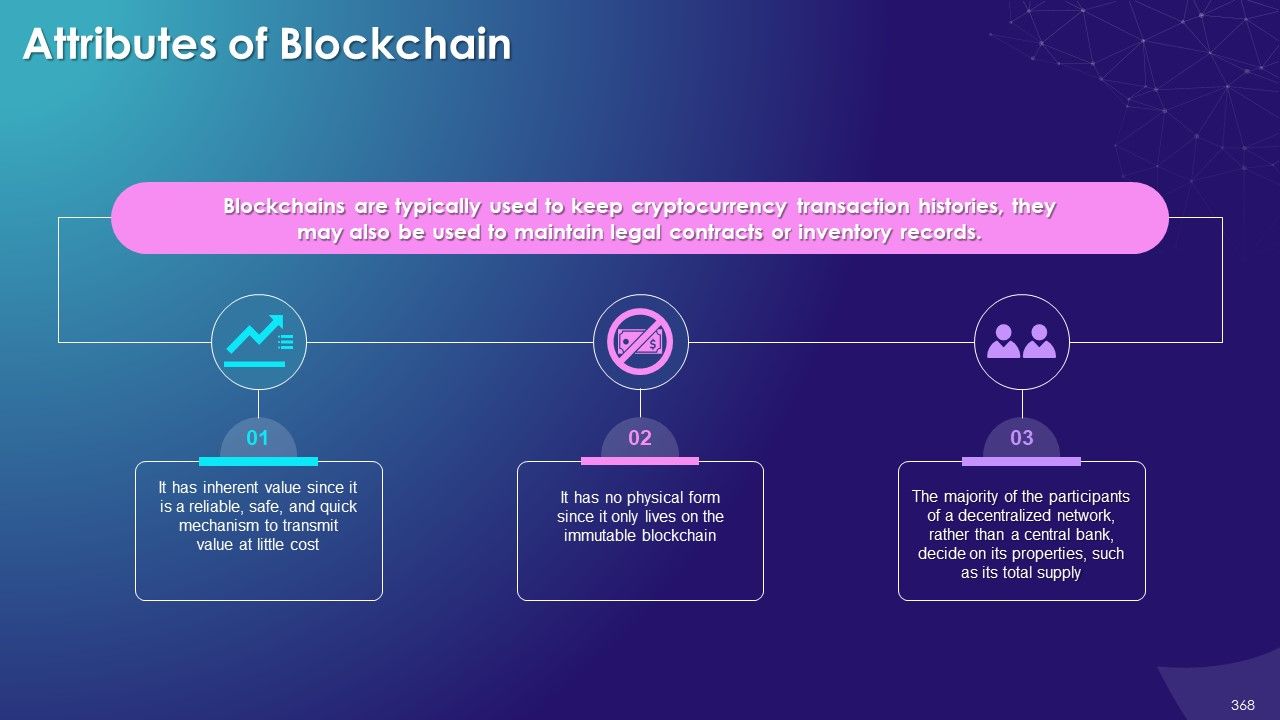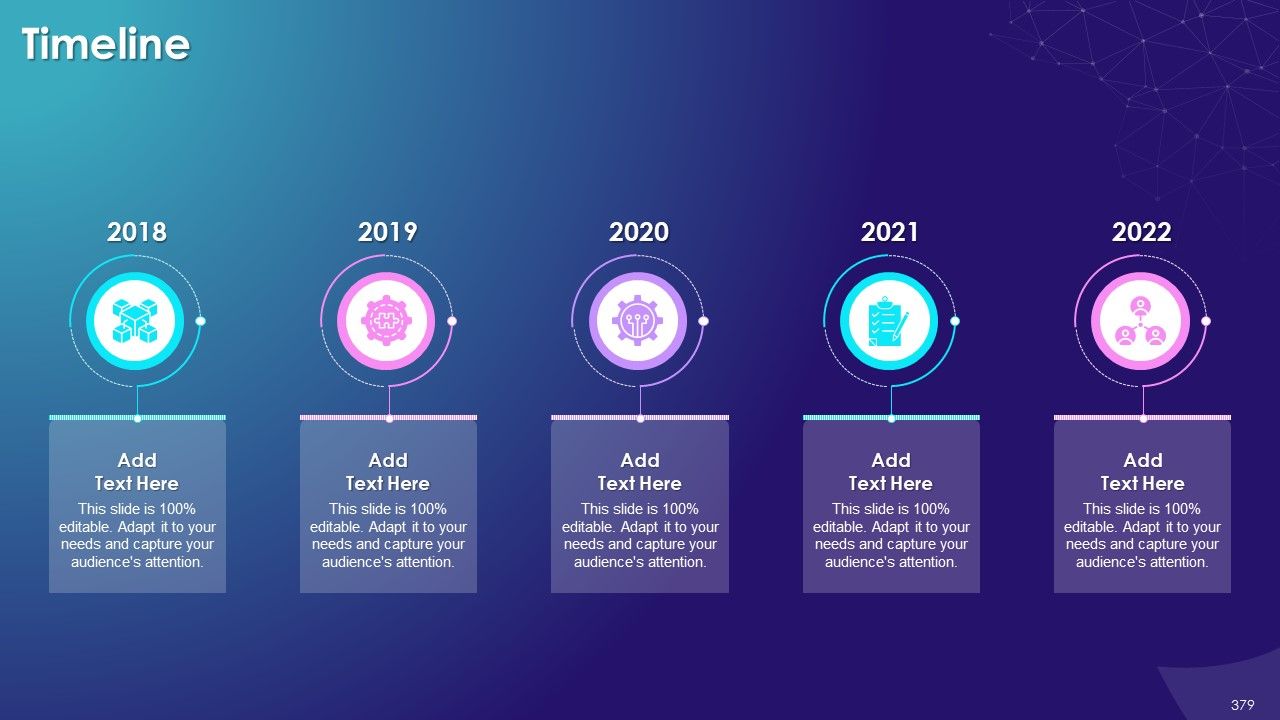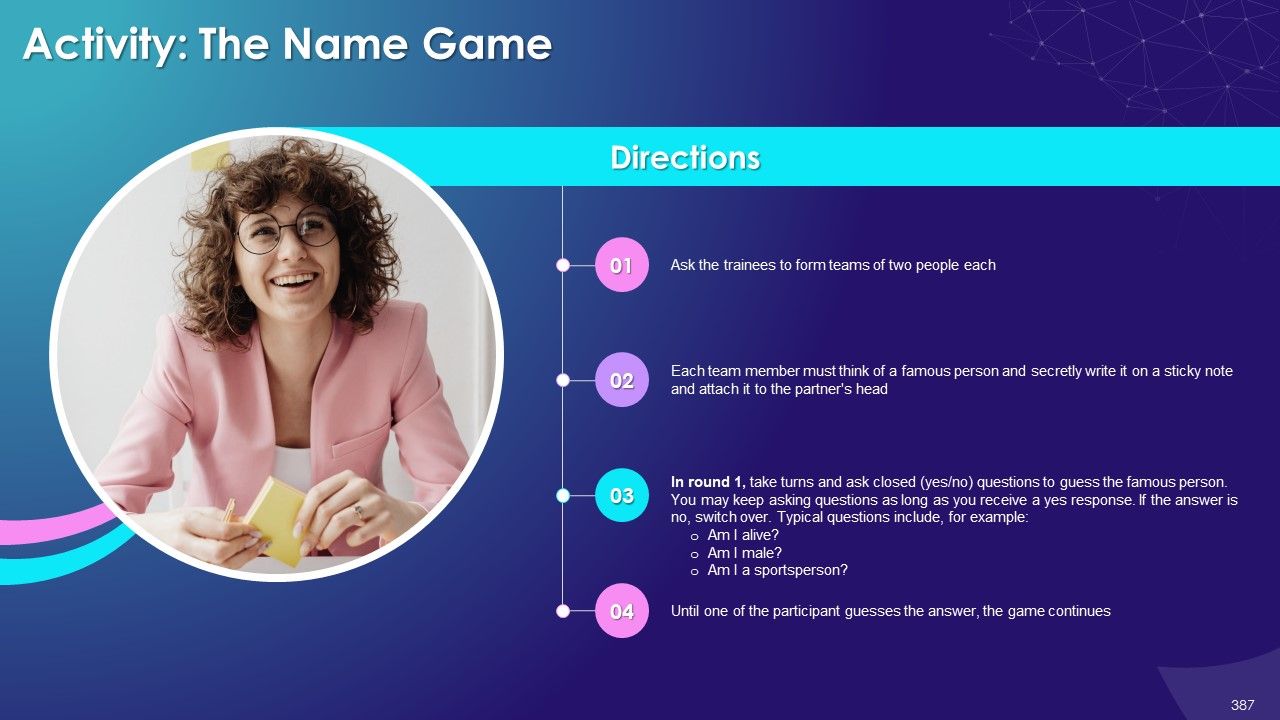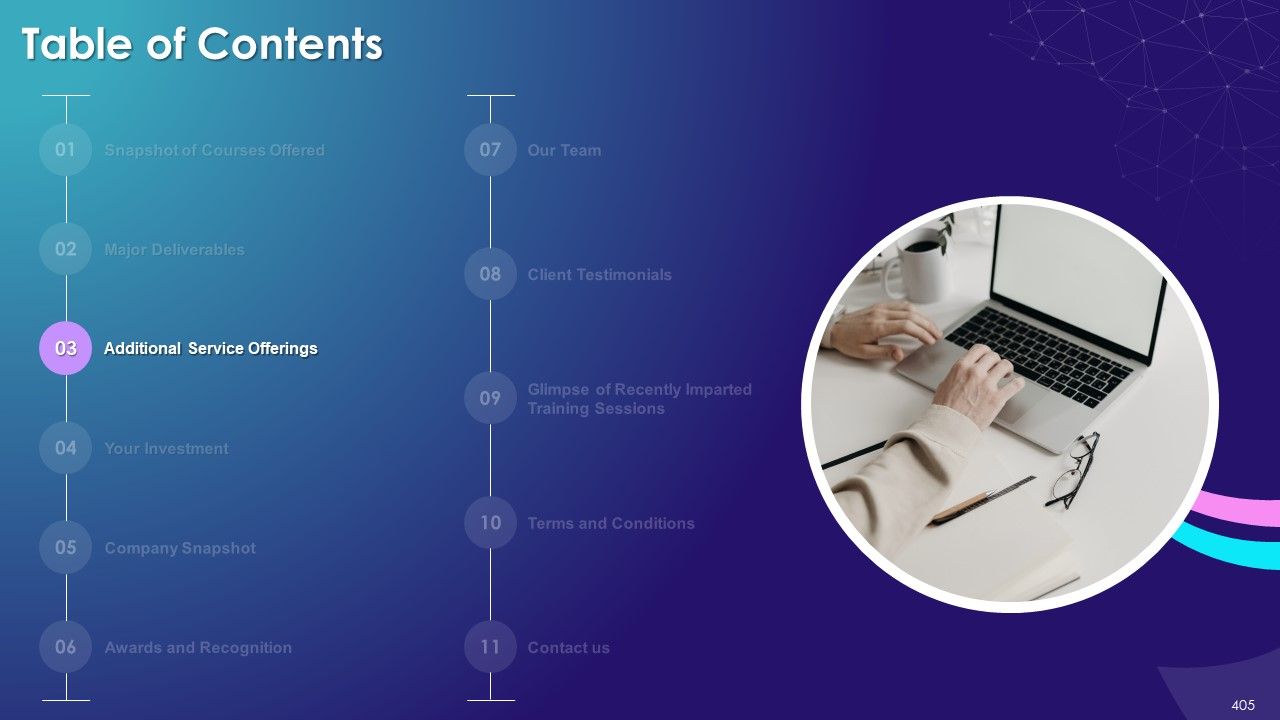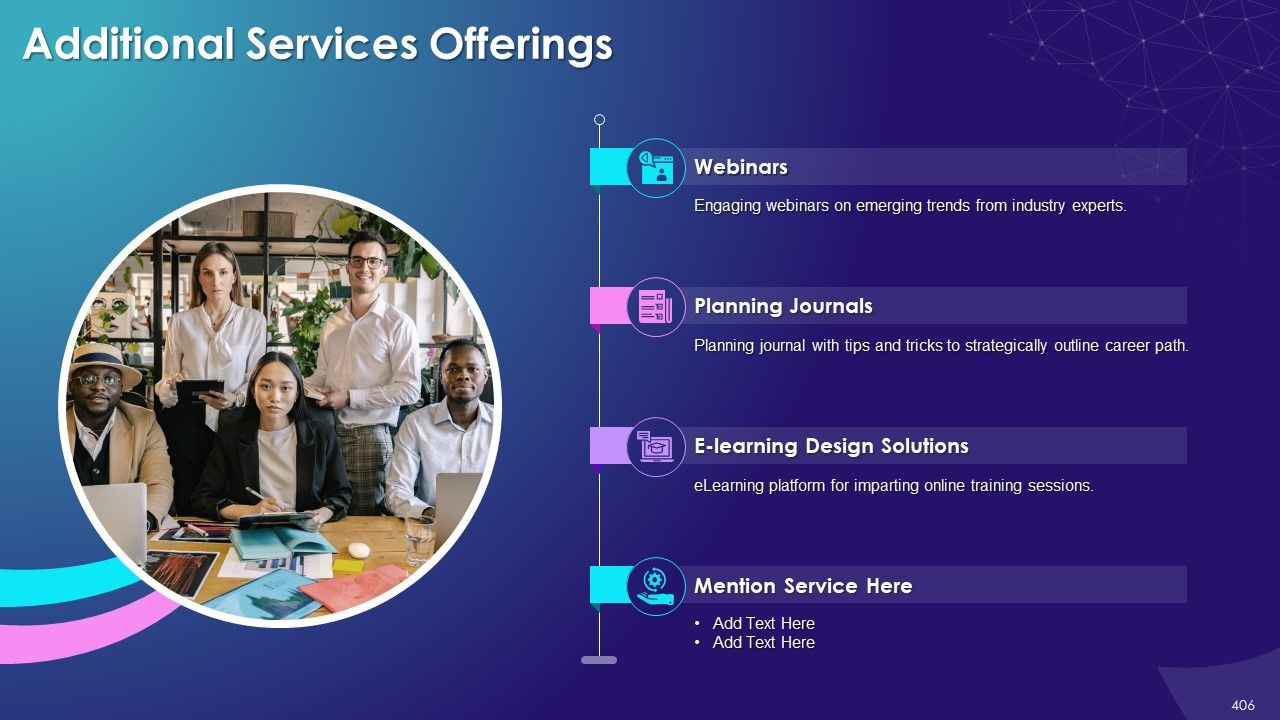Comprehensive Training Curriculum On Cryptocurrency training ppt
What is it
- EduDecks are professionally-created comprehensive decks that provide complete coverage of the subject under discussion
- These are also innovatively-designed for a powerful learning experience and maximum retention
Who is it for?
- EduDecks are for Trainers who want to add punch and flair to program and leave a lasting impact on their trainees
- They are also for Teachers who want to win over their students with content as well design
Why EduDecks?
- EduDecks provide an A-Z coverage of courses on any topic and covers it in both great depth and wide scope
- These slides are also professionally-designed to deliver a punch to your programs
Why Corporate Trainers love us?
- Content created by Industry experts, active in their fields
- Relevant concepts supplemented with industry case studies
- Visually appealing slides with 100% accurate & relevant data
Why Teachers love us?
- Comprehensive curriculum covering all aspects of the topic
- Relevant examples provided with the topics
- Just download and amaze your audience without making any content changes
What you will get
- 7 Structured Sessions
- 20+ Though Provoking Assignments
- 400+ Professionally Designed Slides
- 30+ Objective Type Questions
- Detailed Instructor Notes
People who downloaded this PowerPoint presentation also viewed the following :
Create an Immersive Training Experience
Created by Subject Matter Experts
Professionally Designed Slides
Structured Sessions
Comprehensive Curriculum
Detailed Teaching Notes
Real-Life Case Studies
Assessment Questions
Client Proposal
Complete Curriculum
- Definition, History, and Understanding Cryptocurrencies
- Transaction Process of Cryptocurrencies
- Cryptocurrency vs Traditional Currency
- Cryptocurrency Statistics
- Cryptocurrency Use Cases
- Acceptance of Cryptocurrencies as Payments Among Merchants
- Advantages of Cryptocurrency
- Anonymity
- Ease of Transactions
- Enhanced Security
- Portfolio Diversification
- Hedge against Inflation
- Transactional Freedom
- 24/7 Markets
- Disadvantages of Cryptocurrency
- Inability to Scale
- Price Volatility
- Risk of Data Loss
- High Consumption of Energy
- Illegal Transactions
- Cryptocurrency Markets Myths
- Altcoins
- Definition of Altcoins
- Understanding Altcoins
- Types of Altcoins
- Mining-based
- Stable coins
- Understanding Stablecoins
- Types of Stablecoins
- Fiat-Collateralized
- Commodity-Collateralized
- Crypto-Collateralized
- Non-Collateralized
- Applications of Stablecoins
- Limitations of Stablecoins
- Risks & Regulations associated with Stablecoins
- Understanding Stablecoins
- Security tokens
- Working of Security Tokens
- Types of Security Tokens
- Meme coins
- Why are meme coins so popular?
- Examples of meme coins
- Utility tokens
- Governance Tokens
- Advantages and Disadvantages of Altcoins
- Altcoin vs Bitcoin
- Examples of Altcoins
- Future of Altcoins
- Key Takeaways
- Let’s Discuss
- Let’s Test What We Have Learnt
- Definition, History, and Understanding Cryptocurrencies
- Blockchain Transaction Process
- Overview of Blockchain Platform
- Number of Blockchains that Exist as of 2022
- Introduction to Nodes
- Functioning of Blockchain Nodes
- Types of Blockchain Nodes:
- Full Node
- Pruned Nodes
- Archival Full Nodes
- Authority Nodes
- Miner Nodes
- Master Nodes
- Staking Nodes
- Light Node
- Super Node
- Lightning Node
- Timestamping
- Mining in Blockchain
- Need for Mining Bitcoins
- Prerequisites for Beginning Bitcoin Mining
- Overview of Mining Pools
- How much does a Miner make?
- Introduction to Blockchain Wallet
- Overview of Blockchain Wallet Keys
- Features of Cryptocurrency Wallet
- Wallets based on Private Keys
- Hot Wallets vs Cold Wallets
- Types of Cryptocurrency Wallets
- Software Wallet
- Desktop Wallet
- Online Wallet
- Mobile Wallet
- Hardware Wallet
- Paper Wallet
- Key Takeaways
- Let’s Test What We Have Learnt
- Block Rewards
- Introduction to Block Rewards
- What are Block Rewards used for?
- Block Rewards: Bitcoin vs Ethereum
- Future of Bitcoin Block Rewards
- Transaction Fees
- What are Transaction Fees?
- Why are Transaction Fees important?
- How does Bitcoin Transaction Fee Work?
- How does Ethereum Transaction Fee Work?
- Factors Contributing to Transaction Fee Sizes
- Cryptocurrency Exchanges
- What is a Cryptocurrency Exchange?
- Utility of a Cryptocurrency Exchange
- Operation of Cryptocurrency Exchange
- Examples of Cryptocurrency Exchanges
- Legislation relating to Cryptocurrency Exchanges
- What to look for in an exchange?
- Accessibility
- Security
- Liquidity
- Coins Offered
- Fees
- Storage
- Educational Tools
- Tax Information
- Atomic Swaps
- What is an Atomic swap?
- History of Atomic Swap
- Process of Atomic Swap
- Why are atomic Swaps needed?
- Bitcoin ATMs
- Introduction
- Understanding Bitcoin ATMs
- Types of Bitcoin ATMs
- Pros & Cons of Bitcoin ATMs
- Bitcoin ATMs by Region
- Bitcoin ATMs Legal Compliance
- Initial Coin Offerings
- What is an ICO?
- How does an ICO work?
- Working of an ICO
- Who can launch an ICO?
- ICOs Vs IPOs
- How to participate in an ICO?
- Categories of ICO Scams
- Bounty Scam
- Exit/Rug Pull Scam
- White Paper Plagiarism Scam
- Exchange Scam
- URL Scam
- Ponzi Scheme
- Advantages of an ICO
- Disadvantages of an ICO
- Examples of ICOs
- How is the value of cryptocurrencies determined?
- Supply & Demand
- Node Count
- Cost of Production
- Cryptocurrency Exchanges
- Competition
- Internal Governance
- Regulations & Legal Requirements
- Price Trends
- Databases
- Key Takeaways
- Let’s Discuss
- Let’s Test What We Have Learnt
- Introduction To Bitcoin
- A Brief History of Bitcoin
- Key Statistics Related to Bitcoin
- Steps for Buying Bitcoin
- Spending Bitcoin
- Benefits of Bitcoin
- Bitcoin Security Concerns
- Bitcoin and Energy Consumption
- Real World Uses of Bitcoin
- Introduction to Ethereum
- The Origin of Ethereum
- Working of Ethereum
- Benefits of Ethereum
- Getting started with Ethereum
- Who Employs Ether?
- Difference Between Bitcoin and Ethereum
- Introduction to Litecoin
- Litecoin’s Maximum Supply
- Difference between Litecoin and Bitcoin
- Introduction to Monero
- Monero vs Bitcoin
- Untraceable Payments Through Monero
- Introduction to Ripple
- Working of the Ripple Network
- Ripple vs Bitcoin
- Overview of Dash
- Difference between Dash and Bitcoin
- Introduction to Solana
- Solana vs Ethereum
- Overview of Neo
- Introduction to Stellar
- Overview of Tether
- Uses of Tether
- What Distinguishes Tether?
- Introduction to Cardano
- Cardano vs Bitcoin
- Introduction to Zcas
- ZCash’s Maximum Supply
- ZCash vs Bitcoin
- Introduction to Dogecoin
- Interesting Dogecoin Facts
- Pros and Cons of Dogecoin
- Dogecoin vs Bitcoin
- Introduction to Vechain
- Introduction to Binance Coin
- Purpose of Binance Coin
- Key Takeaways
- Let’s Test What We Have Learnt
- Understanding Cryptocurrency Markets
- Investing in Cryptocurrencies compared to Stocks
- Risks of Investing in Cryptocurrencies
- Crypto for Business
- Factors for Evaluating the Cryptocurrency Market
- Introduction to Active Trading
- Day Trading
- Position Trading
- Swing Trading
- Scalping
- Understanding the value of a cryptocurrency
- Supply and Demand
- Production Costs
- Exchange Availability
- Competition among Cryptocurrencies
- Governance of Cryptocurrencies
- Regulations of Cryptocurrencies
- The Team Backing Cryptocurrencies
- The Community Behind Cryptocurrency
- Tips for Investing in Cryptocurrency
- Educate Yourself
- Prepare for Volatile Markets
- Purchase the Dip
- Choose a Legitimate Trading Platform
- Secure your Accounts
- Beware of the risks associated with ALT coins
- Avoid FOMO
- Be wary of Fraudsters
- Invest in more than one Cryptocurrency
- Start Small and Scale your way up
- Key Takeaways
- Impact on Financial Industry
- Reduced Reliance on Fiat Money
- Ease of Overseas Transactions
- Elimination of Problems related to Remittances
- Eliminates the Need for a Central Regulatory Agency
- New Form of Crowdfunding
- Impact on Banking Industry
- KYC/AML Regulations
- Security Concerns
- Payments
- Smart Contracts
- Easy Onboarding and Expert Assistance
- Custody Services
- Impact through Low Transaction Costs
- Impact on Entrepreneurship
- Impact on Job Markets
- Impact on the Gaming Industry
- Cryptocurrency and the Gaming Industry
- Crypto Games
- Co-creator Rewards
- Better Work Culture
- International Talent & Usage
- Payments in Casino Industry
- Case Study: Axie Infinity (2022)
- Cryptocurrency and the Gaming Industry
- Acceptance of Cryptocurrencies by Aid Agencies
- NFTs
- Impact of NFTs on Global Economy
- Environmental Impact of Cryptocurrencies
- Relative Energy Consumption per Transaction
- Speculation around Cryptocurrency
- Is Cryptocurrency a Speculative Bubble?
- Cryptocurrency & Crime
- Cryptocurrency Thefts
- Theft on the Bitcoin Blockchain
- Cryptocurrency Fraud
- Key Takeaways
- Let’s Discuss
- Let’s Test What We Have Learnt
- Introduction to Legality of Cryptocurrency
- Advertising Bans on Cryptocurrency
- Taxes on Cryptocurrency
- An Unregulated Global Economy
- Money Laundering via Cryptocurrencies
- Darknet Markets
- Wash Trades
- Cryptocurrencies as a tool to evade sanctions
- Legal Status of Cryptocurrency: What’s next?
- Key Takeaways
- Let’s Discuss
- Let’s Test What We Have Learnt
- Attributes of Blockchain
- Understanding Cryptocurrencies Markets
- Cryptocurrency for your Business
Sample Instructor Notes
What is this slide for: Real World Applications of Stablecoins
This slide covers: This slide lists applications of stablecoins. These include the use of stablecoins as a day-to-day currency which is fast & affordable, streamlining recurrent and P2P payments, and providing protection from local currency crashes & market volatility.
Instructor’s Notes:
- A day-to-day Currency: Well-designed stablecoins have the potential to be used in commerce just like any other currency. Since no conversion of multiple fiat currencies is required, stablecoins might be used for international money transfers
- Fast & Affordable Remittances for Migrant Workers: Many migrant workers currently rely on businesses to transfer money back to their families, which is time-consuming and expensive. Stablecoins can be a better alternative. Workers and their families can use digital wallets to receive stablecoins almost instantaneously from anywhere globally, with low fees and no price volatility
- Streamlining Recurrent and P2P Payments: Enforcement of smart contracts is also possible with stablecoins. An employer, for example, may set up a smart contract that automatically transfers stablecoins to its employees at the end of each month
- Improve Cryptocurrency Exchanges: Due to rigorous rules, only a few cryptocurrency exchanges presently offer fiat currencies. However, by simply employing a USD-backed stablecoin instead of actual dollars, exchanges can get past this obstacle and provide crypto-fiat trading pairings. This encourages the general acceptance of cryptocurrency trading since it simplifies the process and allows them to continue thinking in terms of dollars or euros rather than fluctuating bitcoin values
- Protection From Local Currency Crashes & Market Volatility: Local citizens may instantly trade their crashing currency for comparatively safe USD-backed, EUR-backed, or even gold-backed stablecoins, shielding themselves from further value erosion
What is this slide for: Types of Security Tokens
This slide covers: This slide depicts types of Security Tokens. The three main types are equity tokens, debt tokens, and real assets tokens.
Instructor’s Notes:
- Equity Token: Equity tokens represent the value of a company's shares on the blockchain. The technique of registering ownership distinguishes an equity token from a standard stock. A traditional stock is entered into a database and is represented by a paper certificate. On the other hand, an equity token is recorded on an immutable blockchain
- Debt Token: These tokens represent real estate mortgages, corporate bonds, and other debt instruments. These tokens typically pay a regular interest based on the underlying debt instrument's payments. In debt valuation, a debt token is exposed to the risk of debt default. A smart contract can represent the security token, which contains repayment terms and risk indicators related to the underlying debt
- Real Assets Token: They represent ownership of any real-life asset, like commodities, real estate, artwork, etc. Blockchain technology enables transparent records of complex transactions and aids in tracking entities, lowering the risk of fraud
What is this slide for: Overview of Popular Meme Coins
This slide covers: This slide lists popular meme coins. These are: Dogecoin (DOGE), Shiba Inu (SHIB), Dogelon Mars (ELON), and Samoyedcoin (SAMO).
Instructor’s Notes:
- Dogecoin (DOGE): Software programmers Billy Markus and Jackson Palmer founded Dogecoin (DOGE) in 2013. It was designed as a joke cryptocurrency to grab mainstream attention and was inspired by a Shiba Inu dog meme. DOGE uses the same Proof of Work (PoW) process as Litecoin (LTC) and has no limit on supply
- Shiba Inu (SHIB): Shiba Inu (SHIB) is DOGE's main competitor, known as the "Dogecoin killer." A Japanese dog breed inspired SHIB, and in August 2020, an anonymous developer named Ryoshi produced it. The primary distinction between DOGE and SHIB is that the latter has a finite quantity of 1 quadrillion tokens, of which 50% were burned and donated to charity
- Dogelon Mars (ELON): ELON is named after the CEO of Tesla, Elon Musk. It is a fork of Dogecoin with a 557 trillion token circulating supplyLaunched in April 2021, ELON had risen 3780% in value by November 2021, ELON has increased by nearly 3,780% as of November 2021
- Samoyedcoin (SAMO): Samoyedcoin is a Solana blockchain-based dog meme coin project. Over 13% of SAMO supply was airdropped to community members upon launch. SAMO's roadmap includes burning events (sending cryptocurrency to an unusable wallet to remove that amount of it from circulation), airdrop tools, a decentralized exchange, and the construction of NFTs. Within a month, SAMO had grown by nearly 4,300%. In 30 days in October 2021, the price skyrocketed from $0.005 to almost $0.22
What is this slide for: Working of an Initial Coin Offering
This slide covers: This slide showcases the step-by-step process of how an ICO works. The first step involves the identification of investment targets, followed by creation of tokens, promotion campaigns, and finally the initial offering.
Instructor’s Notes:
- Identification of Investment Targets: Each ICO begins with a company's desire to raise funds. The company decides the fundraising campaign's target audience and prepares the required material for potential investors to learn more about the company
- Creation of Tokens: The generation of tokens is the next step in ICO. In other words, the tokens are blockchain representations of an asset or utility, and are tradeable and fungible
- Promotion Campaign: A corporation will typically undertake a promotion campaign at the same time to attract possible investors. It's worth noting that most campaigns are run online to reach as many investors as possible. ICO advertising is now prohibited on significant web platforms, including Facebook and Google
- Initial Offering: The tokens are then offered to investors. It is possible that the offering may be divided into numerous rounds. The company can then use the ICO money to create a new product or service. At the same time, investors may use the tokens they bought to benefit from this product or service or wait for the tokens' value to increase
FAQs
We provide training decks on a wide variety of business and technical topics such as Diversity & Inclusion, Customer Service, Search Engine Optimization, Blockchain Technology, and many more. These are ready-to-present decks that can be downloaded and presented in their current form. These decks are carefully created by industry experts, designed by professionals to deliver a power packed training session.
We want our training decks to evoke curiosity and inspire passion for learning. Each training deck consists of multiple sessions with impeccably designed slides to explain concepts in-depth, key takeaways to summarize sessions, discussions, and multiple-choice questions to assess trainees’ learning. The deck also contains activities and memes to break the monotony and make the training more interactive. Each training deck comes with an assessment form and editable proposal to help pitch your training to clients with success.
It depends on the trainer's content delivery pace, but each deck is created to ensure that training content is for a minimum of 16 hours.
Yes. A significant segment of our customers are professional mentors, coaches and teachers. You can create presentations with our content and distribute these to your trainees. The only caveat is that you cannot share your subscription to our content with others; the license is not transferable. Also, you cannot resell SlideTeam content to others.
Each slide is 100% editable in PowerPoint. Every element of the slide – text, icons, images, vectors, color scheme, etc. can be modified to build an effective PowerPoint presentation. Simply DOWNLOAD, EDIT, and PRESENT!
All PPT slides are compatible with PowerPoint 2007 and above. Some diagrams will not show up correctly with older versions of PowerPoint, like PowerPoint 2003 or lower, because of rendering issues. Yes, they work with PowerPoint for MAC, and decks are compatible with Google Slides too.
Absolutely yes! Our decks are yours to keep and build upon even after your subscription expires. You will not be able to download any additional decks once your subscription expires, but the ones you've downloaded are yours to keep forever.
Our entire website is HTTPS secure, and our payment system is managed by PayPal and Stripe, two of the world's leaders in credit card payment systems and very respected companies in online payments. This makes our systems 100% secure. We do not store or have access to any credit card information ourselves. We direct you to these third-party secure sites with 100% secure SSL connections where you can safely purchase a subscription and then direct you back to our site to download products.
You are allowed to log in and download content from 3 computers. Our website keeps track of login IP addresses, MAC Address Usage, and Browser and Computer Operating System fingerprinting, and you will not be able to log in from more than three computers.

2 Item(s)
-
by Darnell Tucker
4.5/580%What a stunning collection of customizable templates! Really a time-saver..
-
by Joseph Torres
4.5/5100%The Designed Graphic are very professional and classic.
2 Item(s)




